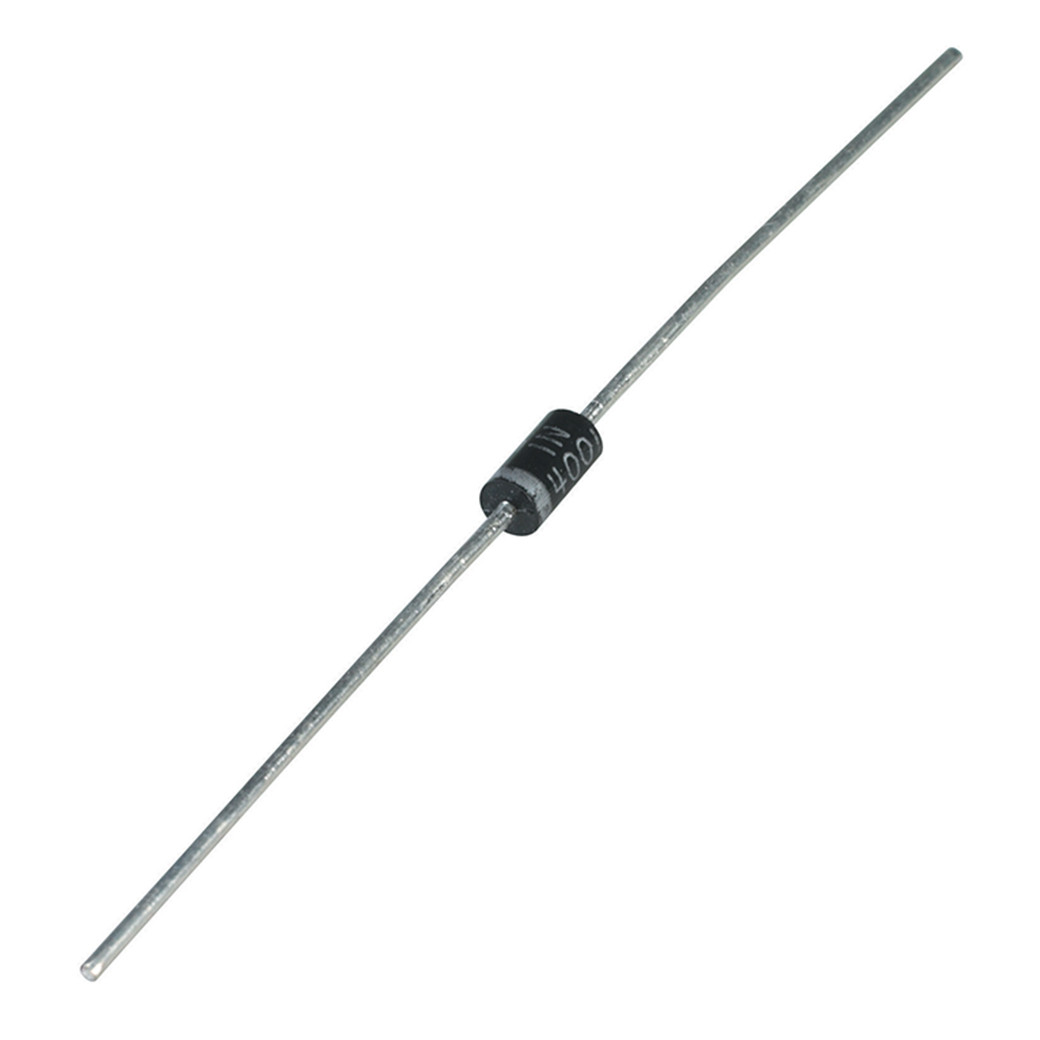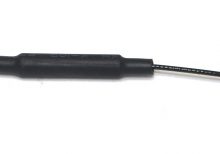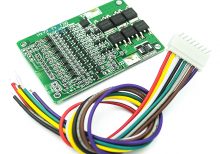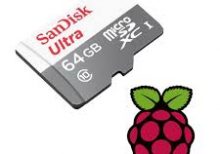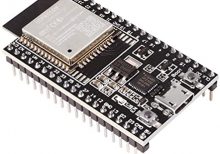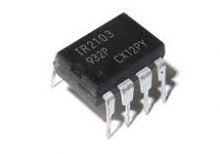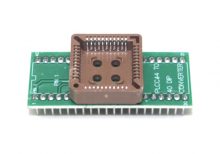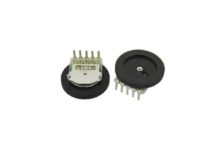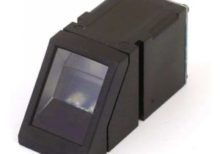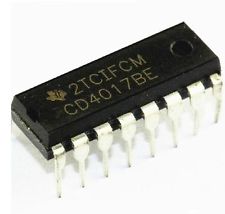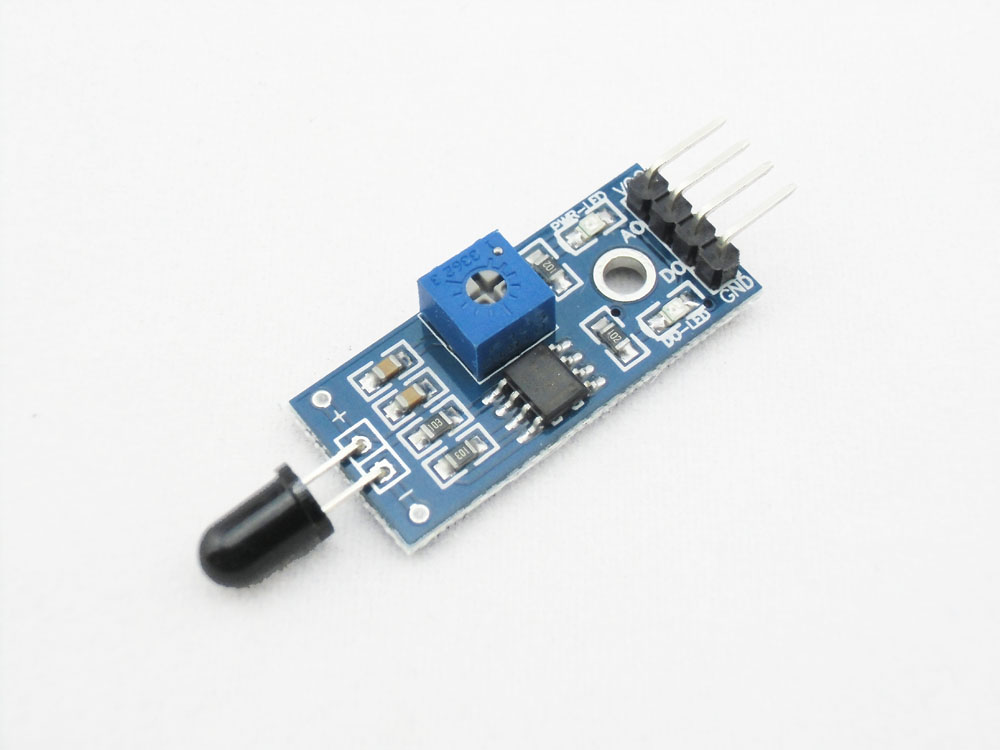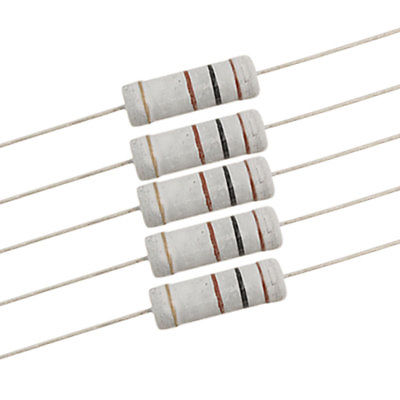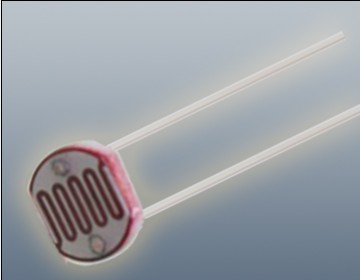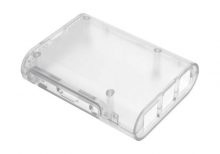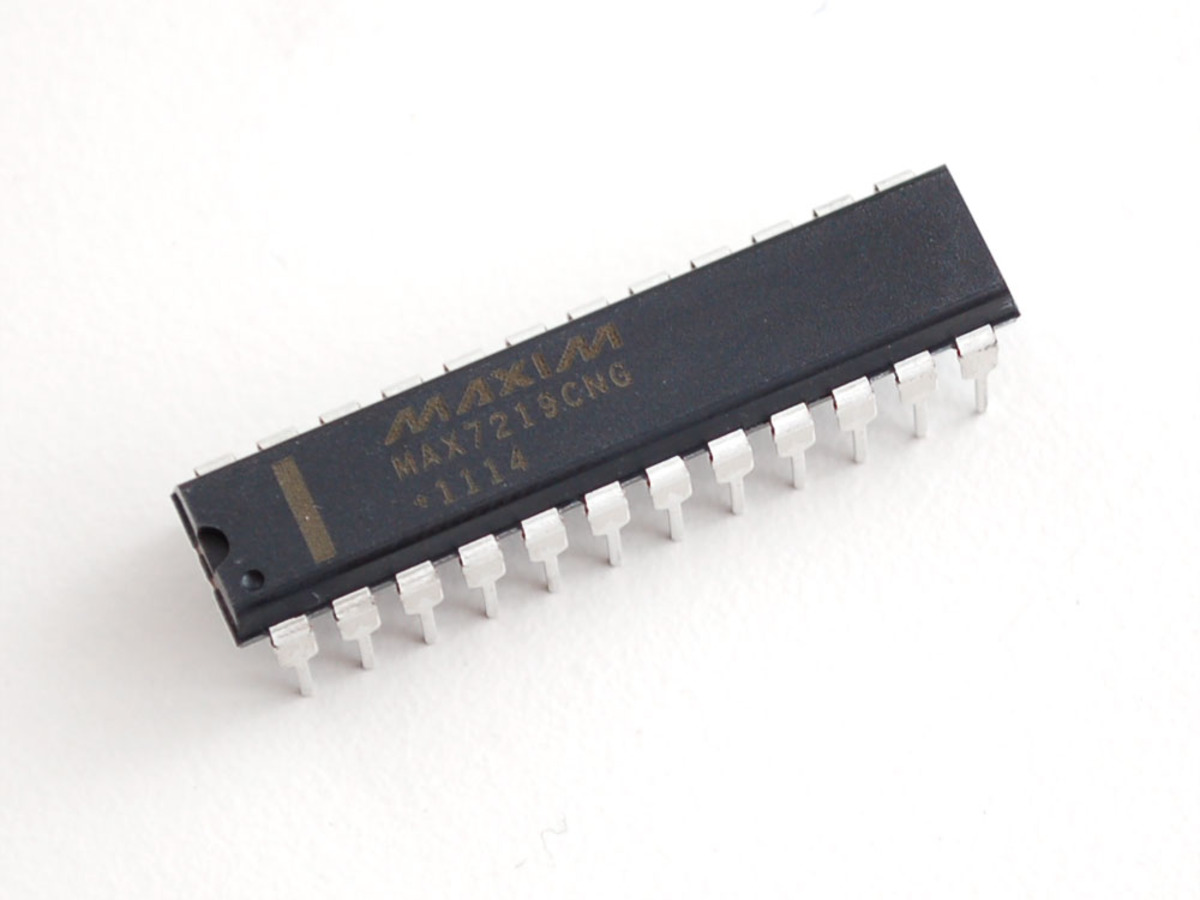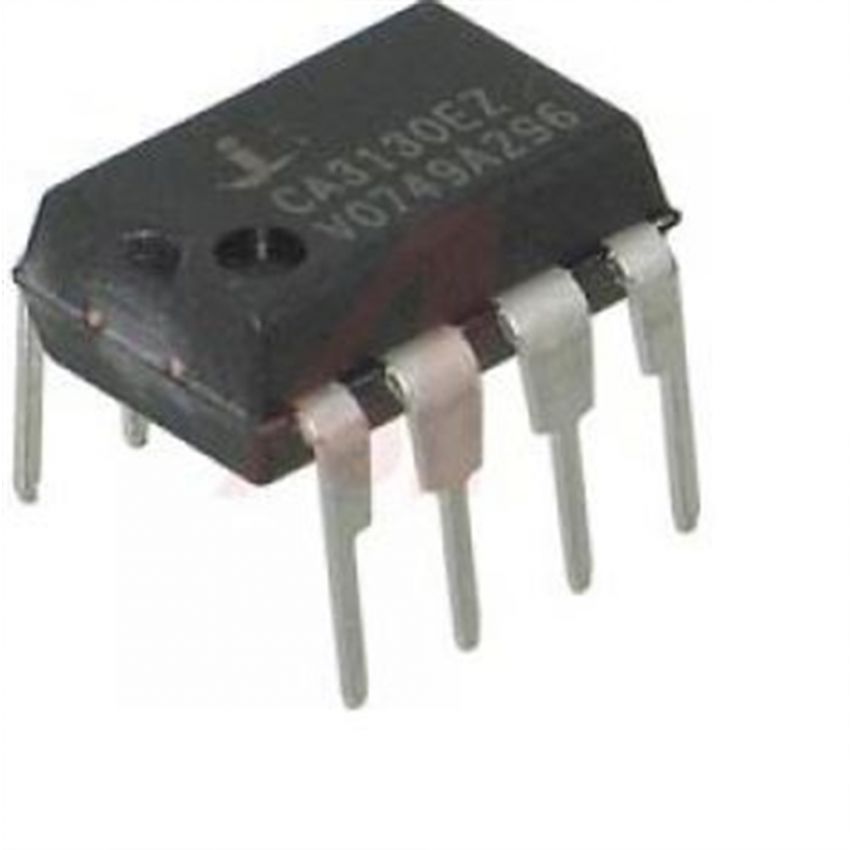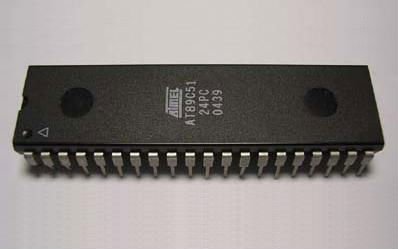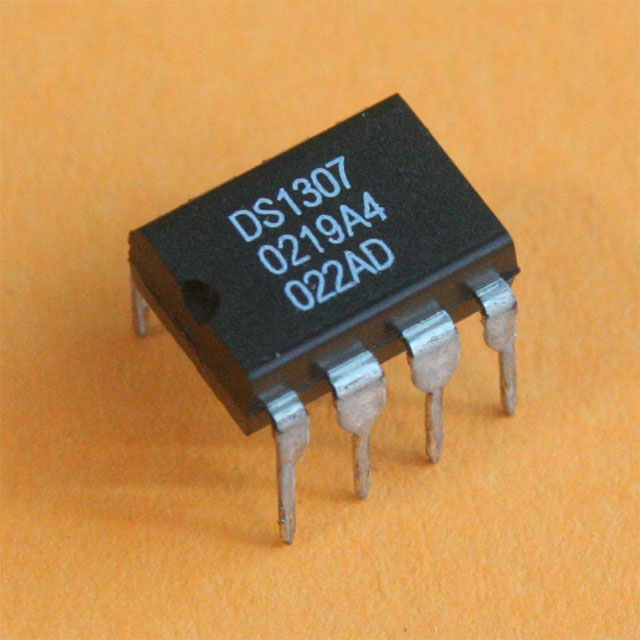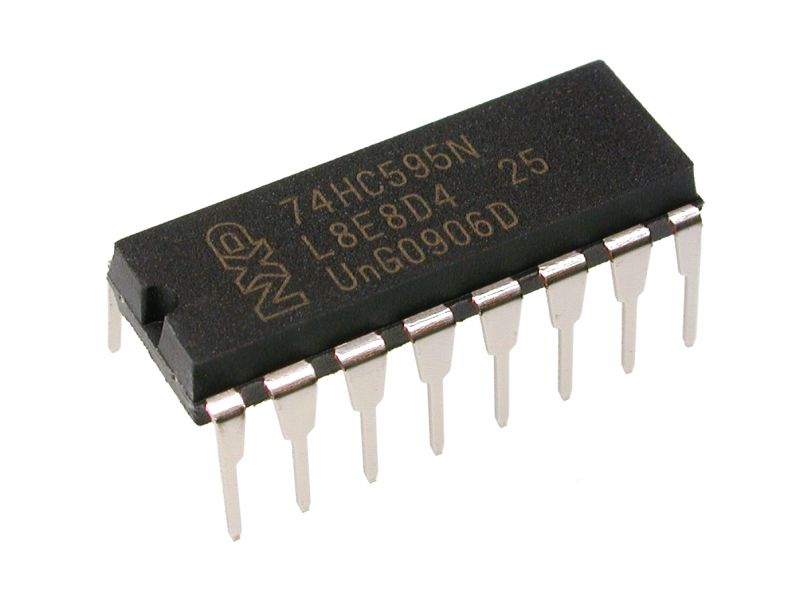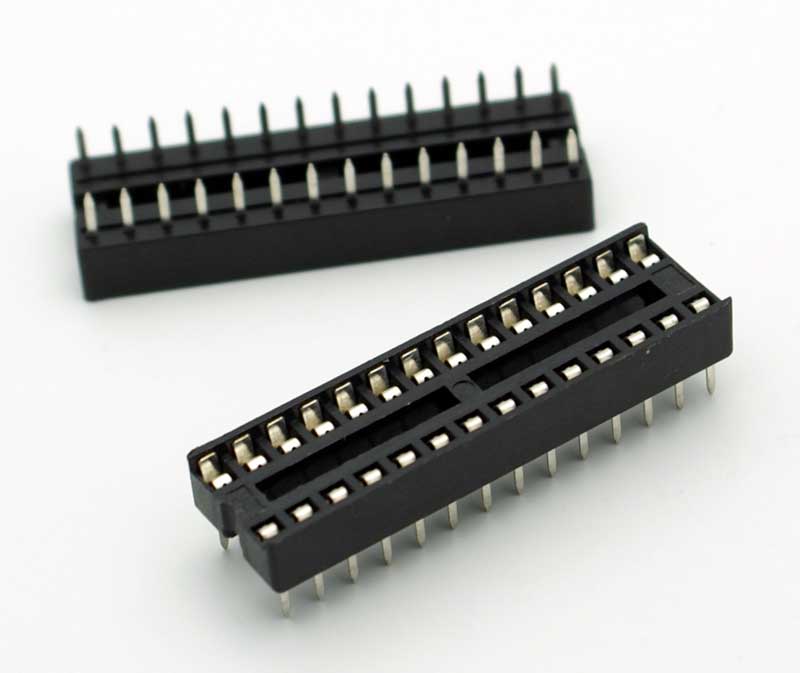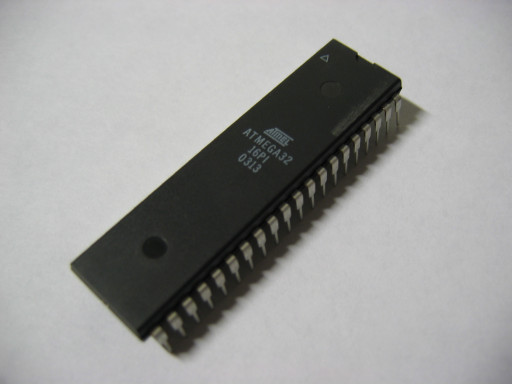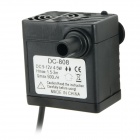|
Description |
The 1N4001 is a general-purpose rectifier diode designed for a wide range of applications including power supplies, converters, and freewheeling diodes. This silicon diode is known for its reliability, low forward voltage drop, and high surge current capability. It is suitable for use in circuits requiring rectification, reverse polarity protection, and other general-purpose diode functions.
Key Features:
- Type: Silicon rectifier diode
- Forward Voltage Drop (Vf): Typically 1.1V at 1A
- Average Rectified Current (Io): 1A
- Peak Repetitive Reverse Voltage (Vrrm): 50V
- Surge Current (Ifsm): 30A
- Recovery Time: Standard recovery
- Package: DO-41
Technical Specifications:
- Maximum Repetitive Peak Reverse Voltage (Vrrm): 50V
- Maximum RMS Voltage (Vrms): 35V
- Maximum DC Blocking Voltage (Vdc): 50V
- Average Rectified Output Current (Io): 1A
- Non-Repetitive Peak Forward Surge Current (Ifsm): 30A
- Forward Voltage (Vf): 1.1V at 1A
- Reverse Current (Ir): 5µA at 50V
- Operating Temperature Range: -65°C to +150°C
Applications:
- Power supply rectification
- Freewheeling diode in motor applications
- Reverse polarity protection
- Converters and inverters
- General-purpose diode functions
Usage:
- Connect the anode (positive lead) to the positive side of the circuit.
- Connect the cathode (marked with a band) to the negative side of the circuit.
- Ensure the diode is correctly oriented to prevent reverse voltage damage.
- Integrate the diode into the circuit to achieve the desired rectification or protection function.
Caution:
- Verify the voltage and current ratings to ensure compatibility with your circuit.
- Avoid exceeding the maximum ratings to prevent damage to the diode.
- Ensure proper thermal management if operating near maximum current ratings.
Datasheet:
For detailed technical specifications, refer to the 1N4001 Diode Datasheet.
|
The GY-291 ADXL345 is a digital accelerometer module that measures acceleration in three axes (X, Y, and Z) and provides high-resolution data for gravity tilt and motion sensing applications. With its low power consumption and wide range of functionalities, it is ideal for various projects, including robotics, gaming, and industrial applications.
Key Features:
- Three-Axis Measurement: Measures acceleration in X, Y, and Z axes.
- High Resolution: 13-bit resolution with a measurement range of ±2g, ±4g, ±8g, or ±16g.
- Low Power Consumption: Operates on low power, making it suitable for battery-powered devices.
- Digital Output: I2C and SPI digital interfaces for easy integration with microcontrollers.
- Built-in Motion Detection: Features tap, double-tap, activity, inactivity, and free-fall detection.
- Tilt Sensing: Accurate gravity tilt sensing capabilities.
Technical Specifications:
- Supply Voltage: 3V to 5V
- Measurement Range: ±2g, ±4g, ±8g, ±16g
- Resolution: 13-bit
- Interface: I2C, SPI
- Data Rate: 0.1Hz to 3200Hz
- Operating Temperature Range: -40°C to +85°C
- Dimensions: 14mm x 13mm x 2mm
- Weight: 1g
Applications:
- Robotics: Motion and tilt sensing for robots and drones.
- Gaming: Enhances gaming experience by detecting motion and orientation.
- Industrial Automation: Vibration monitoring and tilt sensing in industrial machines.
- Wearable Devices: Motion detection in fitness trackers and smartwatches.
- DIY Projects: Suitable for various DIY electronics projects requiring motion sensing.
Datasheet:
For detailed technical specifications, refer to the ADXL345 Datasheet.
|
The IC Socket 20 Pin is designed to house and connect integrated circuits (ICs) with 20 pins. It provides a reliable and reusable interface for ICs, protecting them from heat damage during soldering and allowing for easy insertion and removal. This socket is widely used in prototyping, testing, and production environments.
Key Features:
- 20-pin configuration
- Facilitates easy insertion and removal of ICs
- Gold-plated or tin-plated contacts for optimal conductivity
- Compatible with standard DIP (Dual In-line Package) ICs
- High-temperature tolerance for soldering processes
- Durable construction for long-term use
- Secure IC holding mechanism
Technical Specifications:
- Number of Pins: 20
- Pin Pitch: 2.54mm (0.1 inch)
- Contact Material: Gold-plated or tin-plated phosphor bronze
- Insulator Material: PBT (Polybutylene Terephthalate) or equivalent
- Operating Temperature Range: -55°C to +125°C
- Dimensions: 26mm x 7.5mm x 2.5mm (length x width x height, approximate)
- Weight: 1g
- Mounting Type: Through-hole
Applications:
- Education: Used in educational kits and electronics labs for teaching and learning about ICs.
- Prototyping: Essential for developing and testing circuits with interchangeable ICs.
- DIY Projects: Commonly used in hobby projects for easy IC swapping.
- Embedded Systems: Provides a reliable socket for ICs in embedded applications.
- Production: Used in manufacturing to facilitate IC installation and replacement.
Datasheet:
For detailed technical information, refer to the IC Socket 20 Pin Datasheet provided by the manufacturer.
|
The 2.4G WiFi Built-in Transmitter Antenna is an integrated antenna designed for wireless communication in the 2.4 GHz frequency band. It is commonly used in WiFi modules and devices to transmit and receive signals within the 2.4 GHz ISM (Industrial, Scientific, and Medical) band. The built-in design allows for compact integration into various devices, offering convenience and space-saving benefits.
Key Features:
- Frequency Band: 2.4 GHz ISM band (2.4 to 2.5 GHz)
- Integration: Built-in design for compact and space-saving applications
- Antenna Type: Typically monopole or PCB trace antenna
- Performance: Optimized for WiFi communication with good range and signal strength
- Connector Type: No external connector (integrated into the device)
- Material: Generally made from materials that offer good conductivity and durability
Technical Specifications:
- Frequency Band: 2.4 GHz (2.4 to 2.5 GHz)
- Antenna Type: Monopole, PCB trace, or other built-in designs
- Impedance: 50 ohms
- Gain: Typically 2 dBi to 5 dBi (varies by design)
- Polarization: Linear or vertical polarization
- Power Handling: Designed to handle standard WiFi transmission power levels
- Dimensions: Integrated into the device, size varies depending on design
Applications:
- WiFi Modules: Used in WiFi modules and devices for wireless communication.
- Consumer Electronics: Integrated into consumer electronics such as routers, smartphones, and tablets.
- Embedded Systems: Suitable for embedded systems requiring built-in wireless communication.
- IoT Devices: Applied in Internet of Things (IoT) devices where space is limited and built-in antennas are preferred.
Datasheet:
For detailed technical information, refer to the datasheet of the specific 2.4G WiFi built-in transmitter antenna used in the device, as specifications can vary based on the manufacturer and design.
|
Description:
The 5mm 8×8 Dot Matrix is a versatile LED display module designed for a wide range of applications, including text display, graphical displays, and status indicators. The matrix consists of 64 individual LEDs arranged in an 8×8 grid, providing bright and clear visual output. This module is ideal for use in digital clocks, scoreboards, message boards, and various electronic projects.
Key Features:
- Matrix Configuration: 8×8 grid of LEDs, offering a total of 64 LEDs
- LED Size: 5mm diameter LEDs for bright and clear display
- Display Type: Suitable for alphanumeric characters and simple graphics
- Brightness: High brightness for visibility in various lighting conditions
- Driver Compatibility: Compatible with common LED drivers and controllers for easy integration
- Versatile Use: Can be used for creating dynamic visual effects, messages, and notifications
Technical Specifications:
- Matrix Size: 8×8 (64 LEDs)
- LED Diameter: 5mm
- Operating Voltage: Typically 5V DC
- Color: Typically single color (e.g., red, green, or blue)
- Interface: Requires compatible LED driver/controller for operation
- Dimensions: Compact design for easy integration into various projects
- Weight: Lightweight for easy mounting
Applications:
- Digital Displays: Used in digital clocks and scoreboards for clear numeric and text display
- Message Boards: Ideal for scrolling or static messages in public or private displays
- Decorative Lighting: Useful for creating visual effects and lighting patterns
- Electronic Projects: Suitable for hobbyist projects involving LED display
|
The PIC12F509 is an 8-bit microcontroller from Microchip’s PIC series, designed for low-power and compact applications. It features a minimalistic design with essential peripherals, making it ideal for simple control tasks in embedded systems where space and power efficiency are critical.
Key Features:
- 8-bit architecture
- 1KB Flash program memory
- 64 bytes SRAM data memory
- 64 bytes Electrically Erasable Programmable Read-Only Memory (EEPROM)
- 5 I/O pins
- 8-bit Timer0
- 8-bit Watchdog Timer (WDT)
- Low-power sleep mode
Technical Specifications:
- Operating Voltage: 2.0V to 5.5V
- Operating Frequency: Up to 8MHz
- Program Memory Size: 1KB (Flash)
- Data Memory Size: 64 bytes SRAM
- EEPROM Size: 64 bytes
- Number of I/O Pins: 5
- Timers: 8-bit Timer0
- Package Type: 8-pin DIP, 8-pin SOIC
Applications:
- Low-power sensors and controls
- Simple automation tasks
- Consumer electronics
- Battery-powered devices
- Basic monitoring and logging systems
Usage:
- Connect the microcontroller to a power supply within the operating voltage range.
- Program the microcontroller using its Flash program memory for specific application tasks.
- Utilize the 5 I/O pins for interfacing with external devices.
- Implement timing functions with the 8-bit Timer0 and manage low-power states with the sleep mode.
Caution:
- Ensure the microcontroller is powered within the specified voltage range to avoid damage.
- Adhere to maximum current ratings for I/O pins.
- Handle the microcontroller carefully to prevent static discharge damage.
Datasheet:
For detailed technical specifications, refer to the PIC12F509 Datasheet.
|
The 9V Battery Connector is a convenient and reliable accessory used to connect 9V batteries to electronic circuits and devices. It features a pair of snap connectors that securely attach to the terminals of a 9V battery, providing an easy way to power various projects and components.
Key Features:
- Easy and secure connection to 9V batteries
- Color-coded wires for correct polarity
- Flexible and durable leads for reliable connections
- Compatible with various electronic projects and devices
- Lightweight and compact design
Technical Specifications:
- Connector Type: Snap-on for 9V battery
- Wire Length: Typically around 15cm (varies by manufacturer)
- Wire Gauge: 24 AWG (varies by manufacturer)
- Polarity: Red wire for positive (+), black wire for negative (-)
- Material: Plastic housing with metal contacts
- Rated Voltage: 9V
- Current Capacity: Up to 1A
Applications:
- Powering small electronic projects
- Battery-powered devices
- Portable electronics
- Prototyping and breadboarding
- DIY and hobby projects
Usage:
- Connection:
- Snap the connector onto the terminals of a 9V battery, ensuring correct polarity (red wire to positive, black wire to negative).
- Wiring:
- Connect the leads to your circuit or device, observing proper polarity.
- Use solder, connectors, or a breadboard to make secure connections.
- Powering Devices:
- Use the 9V battery and connector to power your electronic projects, ensuring the voltage and current requirements are compatible.
Caution:
- Ensure correct polarity to avoid damaging the battery or connected device.
- Handle the connector and wires carefully to prevent short circuits.
- Avoid excessive bending or pulling on the wires to maintain reliable connections.
|
The 7S 15A 18650 LiPo Battery Management System (BMS) with Protection Board is designed for managing and protecting lithium-ion battery packs consisting of seven series-connected 18650 cells. This BMS ensures safe operation by monitoring cell voltages, balancing charge among cells, and providing protection against overcharge, over-discharge, overcurrent, and short circuits.
Key Features:
- Cell Configuration: Supports 7 series (7S) 18650 LiPo cells.
- Current Rating: Handles continuous discharge currents up to 15A.
- Protection: Offers overcharge, over-discharge, overcurrent, and short-circuit protection.
- Cell Balancing: Balances cell voltages to maintain battery health and performance.
- Compact Design: Small and lightweight for easy integration into battery packs.
- Heat Dissipation: Designed to dissipate heat effectively, ensuring stable operation.
- LED Indicators: May include LED indicators for status monitoring (depending on the model).
Technical Specifications:
- Battery Configuration: 7S (7 cells in series)
- Max Continuous Discharge Current: 15A
- Overcharge Protection Voltage: Typically set around 4.25V per cell
- Over-discharge Protection Voltage: Typically set around 2.5V per cell
- Overcurrent Protection: Activated at currents exceeding 15A
- Short-circuit Protection: Immediate shutdown in the event of a short circuit
- Balance Current: Typically around 50mA to 100mA per cell
- Dimensions: Varies by manufacturer, typically designed to fit within standard battery pack enclosures
Applications:
- Electric Vehicles: Managing battery packs in e-bikes, e-scooters, and other electric vehicles.
- Portable Electronics: Ensuring safe operation of high-capacity battery packs in laptops, power banks, and other devices.
- Solar Energy Storage: Used in solar battery storage systems for balancing and protection.
- DIY Projects: Ideal for hobbyists building custom battery packs for various applications.
- RC Models: Protecting battery packs in remote-controlled aircraft, cars, and boats.
|
The Raspberry Pi 5 Inch Touch Screen Display is a high-resolution display designed for use with the Raspberry Pi single-board computer. It features a capacitive touch screen for an intuitive and interactive user experience, making it ideal for a wide range of projects, including embedded applications, digital signage, and portable computing devices.
Key Features:
- 5-inch display with a high-resolution of 800×480 pixels
- Capacitive touch screen with multi-touch capability
- Supports backlight control
- Compatible with Raspberry Pi models
- Easy integration with GPIO pins
- HDMI input for high-quality video display
- USB interface for touch control
Technical Specifications:
- Display Size: 5 inches
- Resolution: 800×480 pixels
- Touch Screen Type: Capacitive
- Touch Points: 10-point multi-touch
- Interface: HDMI (video), USB (touch)
- Backlight Control: Yes
- Power Supply: 5V DC via micro USB
- Dimensions: 121.11mm x 76.96mm
- Operating Temperature Range: -20°C to 70°C
Applications:
- Portable computing devices
- Embedded systems
- Digital signage
- Home automation interfaces
- Educational tools and kits
- Prototyping and development projects
Datasheet:
For detailed technical specifications, refer to the Raspberry Pi 5 Inch Touch Screen Display Datasheet.
|
The 2N3904 is an NPN bipolar junction transistor (BJT) designed for general-purpose low-power switching and amplification. Renowned for its high current gain and low noise, the 2N3904 is versatile and widely used in various electronic circuits, including signal processing, switching, and low-power amplification.
Key Features:
- Type: NPN Bipolar Junction Transistor (BJT)
- High Gain: Provides high current gain (hFE) for effective signal amplification
- Low Noise: Suitable for low-noise applications
- Compact Package: Available in a TO-92 package, ideal for space-constrained designs
Technical Specifications:
- Collector-Emitter Voltage (Vce): 40V
- Collector-Base Voltage (Vcb): 60V
- Emitter-Base Voltage (Veb): 6V
- Collector Current (Ic): 200mA
- Power Dissipation (Ptot): 625mW
- DC Current Gain (hFE): 30 to 300
- Transition Frequency (ft): 300MHz
- Package Type: TO-92
Applications:
- Signal Amplification: Ideal for use in low-power amplification circuits
- Switching: Suitable for general-purpose switching applications
- Audio Circuits: Effective in audio signal processing and low-power amplification
- General Purpose: Versatile for various electronic applications and projects
Usage:
- Circuit Design: Integrate the 2N3904 transistor into your circuit based on your specific application requirements.
- Biasing: Properly bias the transistor to ensure optimal performance for amplification or switching.
- Connection: Connect the collector, base, and emitter terminals as per your circuit design.
- Testing: Verify the transistor’s operation in your circuit to ensure it functions correctly.
Caution:
- Voltage and Current Ratings: Adhere to the maximum voltage and current ratings to prevent damage.
- Heat Management: Ensure adequate heat dissipation to avoid overheating, especially in high-current applications.
- Static Electricity: Handle with care to avoid damage from electrostatic discharge (ESD).
Datasheet:
For detailed technical specifications, refer to the 2N3904 Transistor Datasheet.
|
The 2N3906 is a PNP bipolar junction transistor (BJT) designed for general-purpose low-power switching and amplification. It is widely used in various electronic circuits due to its high current gain and low noise characteristics. The 2N3906 is suitable for a range of applications including signal processing, switching, and low-power amplification.
Key Features:
- Type: PNP Bipolar Junction Transistor (BJT)
- High Gain: Provides high current gain (hFE) for effective signal amplification
- Low Noise: Suitable for low-noise applications
- Compact Package: Available in a TO-92 package, ideal for space-constrained designs
Technical Specifications:
- Collector-Emitter Voltage (Vce): -40V
- Collector-Base Voltage (Vcb): -40V
- Emitter-Base Voltage (Veb): -5V
- Collector Current (Ic): -200mA
- Power Dissipation (Ptot): 625mW
- DC Current Gain (hFE): 100 to 300
- Transition Frequency (ft): 250MHz
- Package Type: TO-92
Applications:
- Signal Amplification: Ideal for use in low-power amplification circuits
- Switching: Suitable for general-purpose switching applications
- Audio Circuits: Effective in audio signal processing and low-power amplification
- General Purpose: Versatile for various electronic applications and projects
Usage:
- Circuit Design: Integrate the 2N3906 transistor into your circuit based on your specific application requirements.
- Biasing: Properly bias the transistor to ensure optimal performance for amplification or switching.
- Connection: Connect the collector, base, and emitter terminals as per your circuit design.
- Testing: Verify the transistor’s operation in your circuit to ensure it functions correctly.
Caution:
- Voltage and Current Ratings: Adhere to the maximum voltage and current ratings to prevent damage.
- Heat Management: Ensure adequate heat dissipation to avoid overheating, especially in high-current applications.
- Static Electricity: Handle with care to avoid damage from electrostatic discharge (ESD).
Datasheet:
For detailed technical specifications, refer to the 2N3906 Transistor Datasheet.
|
The Raspberry Pi SD Card 64GB is a high-capacity microSD card designed to provide ample storage for your Raspberry Pi projects. This microSD card offers a significant amount of space for operating systems, applications, data, and multimedia files, ensuring smooth and efficient performance. It is ideal for more complex and storage-intensive projects using any Raspberry Pi model with a microSD card slot.
Key Features:
- 64GB storage capacity
- Pre-loaded with the Raspberry Pi operating system (optional)
- High-speed data transfer rates
- Reliable and durable design
- Compatible with all Raspberry Pi models with a microSD card slot
- Ideal for projects requiring substantial storage space
- Easy to set up and use
Technical Specifications:
- Capacity: 64GB
- Format: MicroSDXC
- Speed Class: Class 10, UHS-I or UHS-II (varies by model)
- Read Speed: Up to 100MB/s (varies by model)
- Write Speed: Up to 90MB/s (varies by model)
- Operating Voltage: 2.7V to 3.6V
- Operating Temperature: -25°C to +85°C
- Storage Temperature: -40°C to +85°C
- Dimensions: Standard microSD card size
Applications:
- Raspberry Pi OS and application storage
- Data logging and storage
- Multimedia projects
- IoT applications
- Education and development projects
- Complex software development and testing
Datasheet:
For detailed technical information, please refer to the MicroSD Card Datasheet.
|
The PIC12F675 is an 8-bit microcontroller from Microchip’s PIC12 family, known for its low-power operation and compact size. It is designed for applications requiring a small form factor and includes integrated peripherals like timers and an Analog-to-Digital Converter (ADC), making it suitable for simple control tasks and sensor interfacing.
Key Features:
- 8-bit microcontroller with 14-bit instruction set architecture
- 128 bytes of RAM
- 256 bytes of EEPROM
- 10-bit Analog-to-Digital Converter (ADC)
- Two Timer modules (Timer0 and Timer1)
- Watchdog Timer (WDT)
- Capture/Compare/PWM (CCP) module
- Low-power operation with multiple sleep modes
- 6-bit wide I/O ports
- Internal oscillator
Technical Specifications:
- Operating Voltage: 2.0V to 5.5V
- Operating Frequency: Up to 20MHz
- Program Memory Size: 1KB (Flash)
- Data Memory Size: 64 bytes SRAM
- EEPROM Size: 128 bytes
- Number of I/O Pins: 6
- Timers: 8-bit Timer0, 8-bit Timer1
- ADC Resolution: 10-bit
- Package Type: 8-pin PDIP, 8-pin SOIC
Applications:
- Consumer electronics
- Battery-operated devices
- Simple sensor interfacing
- LED and display control
- Remote controls
- Low-power embedded systems
Usage:
- Connect the microcontroller to a power supply within the recommended voltage range.
- Program the PIC12F675 using its Flash program memory for specific tasks.
- Utilize the ADC for analog signal processing and Timer modules for timing tasks.
- Manage power consumption effectively using sleep modes for battery-operated applications.
Caution:
- Check power supply and connections to prevent damage.
- Handle with care to avoid electrostatic discharge (ESD) damage.
- Ensure I/O pins do not exceed maximum current ratings to prevent damage.
Datasheet:
For detailed technical specifications, refer to the PIC12F675 Datasheet.
|
The ESP32-DevKitC is a development board based on the ESP32-WROOM-32D module, designed for prototyping IoT applications and projects. It combines Wi-Fi and Bluetooth capabilities with a powerful dual-core processor, making it suitable for a wide range of applications.
Key Features:
- Microcontroller: ESP32-WROOM-32D with dual-core Tensilica LX6 processor.
- Wireless Connectivity: Integrated Wi-Fi (802.11b/g/n) and Bluetooth (BLE) for IoT applications.
- Peripheral Interfaces: Includes GPIOs, SPI, I2C, UART, ADC, DAC, and more for interfacing with sensors and peripherals.
- Programming: Supports Arduino IDE, ESP-IDF (Espressif IoT Development Framework), and other development environments.
- On-board Components: Typically includes USB-to-serial converter, voltage regulator, and reset button.
- Development Support: Extensive community support and documentation for rapid prototyping and development.
- Power Supply: Can be powered via USB or external power supply (5V DC).
- Form Factor: Compact size with mounting holes for easy integration into projects.
- Security: Features hardware-based security with cryptographic accelerators.
Technical Specifications:
- Dimensions: Varied, typically compact (around 52mm x 28mm).
- Memory: Up to 520 KB SRAM, external SPIRAM support.
- Operating Voltage: 3.3V (powered from USB or external supply).
- Clock Speed: Up to 240 MHz.
- Interfaces: UART, SPI, I2C, I2S, PWM, ADC, DAC, etc.
- Operating Temperature: -40°C to +85°C.
Applications:
- IoT devices and sensors.
- Home automation.
- Wearable devices.
- Industrial automation.
- Prototyping and development of wireless applications.
Datasheet: For detailed technical information, refer to the ESP32-DevKitC Datasheet.
|
The Allen key, also known as a hex key or hex wrench, is a tool designed for driving screws and bolts with hexagonal sockets. The Size 1.5 mm Allen key is specifically used for fasteners with a 1.5 mm hexagonal socket. This is one of the smallest Allen keys available and is typically used in precision applications where very small fasteners are required.
Key Features:
- Size: 1.5 mm (hexagonal socket size)
- Shape: Commonly L-shaped or T-shaped
- Material: Often made from high-quality steel or chrome vanadium for strength and durability
- Finish: Typically coated with black oxide, chrome plating, or other protective finishes to resist corrosion
- Type: Available in various designs including short or long arm, and sometimes with a ball end for ease of use in tight spaces
Technical Specifications:
- Hexagon Size: 1.5 mm
- Length: Varies by design, usually ranging from 30 mm to 80 mm for short arms, and longer for T-handle or L-handle versions
- Material: Steel, chrome vanadium, or other hardened materials
- Finish: Black oxide, chrome-plated, or other protective coatings
Applications:
- Precision Work: Ideal for tasks involving very small screws and bolts, such as in electronics and small machinery.
- Model Building: Commonly used in assembling and repairing model kits where very small fasteners are used.
- Bicycles: Useful for adjusting components on bicycles that require a small hex size.
- Electronics: Essential for assembling and servicing electronic devices with tiny hex screws.
- Jewelry Making: Used in precision applications where very small screws are common.
Datasheet:
Allen keys generally do not have detailed datasheets, but tool manufacturers or suppliers can provide specifications.
|
The IR2103PBF is a high voltage, high-speed power MOSFET and IGBT driver with independent high and low side referenced output channels. It is designed to drive high-side and low-side N-channel power MOSFETs or IGBTs in a half-bridge configuration. The device features a floating channel designed for bootstrap operation, allowing it to drive the high-side switch up to 600V.
Key Features:
- Gate drive supply range from 10V to 20V
- Floating channel can be used to drive an N-channel power MOSFET or IGBT in the high-side configuration up to 600V
- Gate drive outputs: 2A peak source, 2A peak sink
- Independent high-side and low-side channels
- Under-voltage lockout for both channels
- Logic input (IR2103) compatible with standard CMOS or LSTTL outputs
- Matched propagation delay for both channels
- Low side output in phase with input signal
- High side output out of phase with input signal
Technical Specifications:
- Supply Voltage (Vcc): 10V – 20V
- Floating Supply Voltage (Vb): up to 600V
- Logic Supply Voltage (Vss): -5V – 20V
- Output Source Current (Io+): 2A
- Output Sink Current (Io-): 2A
- Gate Drive Output Voltage (Vout): 10V – 20V
- Propagation Delay: 120ns (typical)
- Operating Temperature Range: -40°C to +125°C
- Package: PDIP-8
Applications:
- Motor drive applications
- Induction heating
- UPS systems
- DC-DC converters
- Switch-mode power supplies
Datasheet:
For detailed technical information, please refer to the IR2103PBF Datasheet.
|
|
A small magnifying glass is a handheld optical device used to magnify small objects, making them appear larger for easier viewing. It is commonly used in applications such as reading small text, inspecting small objects, detailed crafts, and electronics work. Small magnifying glasses are portable, easy to use, and often come with additional features like built-in lights for enhanced visibility.
Key Features:
- Magnification: Typically ranges from 2x to 10x magnification
- Lens Diameter: Small lens diameters, commonly around 25 mm to 75 mm
- Material: Lenses are usually made from glass or high-quality acrylic
- Handle: Ergonomically designed handles for comfortable grip
- Additional Features: Some models come with built-in LED lights for better illumination
Technical Specifications:
- Magnification Power: Commonly available in 2x, 3x, 5x, 7x, and 10x magnifications
- Lens Diameter: Varies from 25 mm to 75 mm
- Lens Material: Optical glass or acrylic
- Frame Material: Plastic or metal
- Handle: Often plastic, rubber-coated, or metal with ergonomic design
- Weight: Typically lightweight, around 20 g to 100 g
Applications:
- Reading: Enhances the readability of small text in books, newspapers, and maps.
- Crafts and Hobbies: Useful for detailed work in model building, jewelry making, and other crafts.
- Electronics: Assists in inspecting small components, solder joints, and circuit boards.
- Biology and Botany: Helps in examining small specimens like insects and plant parts.
- Everyday Use: Handy for reading labels, menus, and other small print items.
Datasheet:
Small magnifying glasses generally do not have detailed datasheets, but the manufacturer or supplier can provide specifications.
|
Description:
The Seven Segment High Precision Electronic Clock is a digital timekeeping device that displays the current time with high accuracy. Utilizing seven-segment LED displays, it provides a clear and easily readable representation of hours, minutes, and seconds. This clock is suitable for various applications, including industrial environments, educational settings, and personal use.
Key Features:
- High Precision Timekeeping: Ensures accurate time display with minimal drift over time.
- Seven-Segment LED Display: Provides clear and bright time readouts, easily visible from a distance.
- User-Friendly Interface: Simple controls for time setting and adjustments.
- Durable Construction: Built to withstand continuous use in various environments.
- Compact Design: Easily integrates into different spaces without occupying much room.
Technical Specifications:
- Display Type: Seven-segment LED
- Power Supply: Typically 5V DC
- Accuracy: ±1 second per month
- Operating Temperature Range: 0°C to +50°C
- Dimensions: Compact size for versatile installation options
- Weight: Lightweight design for ease of handling and mounting
Applications:
- Industrial Timing: Used in manufacturing plants and workshops for precise timekeeping.
- Educational Settings: Ideal for classrooms and laboratories for teaching time management and electronics.
- Personal Use: Suitable for home and office use to keep accurate track of time.
- Public Spaces: Can be installed in public areas such as lobbies, halls, and waiting rooms for time display.
|
The Allen key, also known as a hex key or hex wrench, is a tool used to drive screws and bolts with hexagonal sockets. The Size 2 mm Allen key is designed for use with fasteners that have a 2 mm hexagonal socket. This size is commonly used in various precision and small-scale applications.
Key Features:
- Size: 2 mm (hexagonal socket size)
- Shape: Typically L-shaped or T-shaped
- Material: Often made from high-strength steel or chrome vanadium for durability
- Finish: Commonly coated with black oxide, chrome plating, or other protective finishes to resist corrosion
- Type: Available in different designs, such as short or long arm, and sometimes with a ball end for use at an angle
Technical Specifications:
- Hexagon Size: 2 mm
- Length: Varies by design, e.g., 40 mm to 100 mm for short arms, and longer for T-handle or L-handle versions
- Material: Steel, chrome vanadium, or other hardened materials
- Finish: Black oxide, chrome-plated, or other protective coatings
Applications:
- Precision Work: Ideal for tasks involving small screws and bolts, such as in electronics, small machinery, and model assembly.
- Model Building: Commonly used in assembling and repairing model kits and hobby projects.
- Bicycles: Useful for adjustments on bicycle components that require a small hex size.
- Electronics: Essential for assembling and servicing electronic devices with small hex screws.
- Furniture Assembly: Often used for small, precision parts in flat-pack furniture.
Datasheet:
Allen keys typically do not have detailed datasheets, but specifications can be obtained from the tool manufacturer or supplier.
|
The PLC44 to DIP40 IC Socket Adapter is designed to convert a 44-pin PLCC (Plastic Leaded Chip Carrier) IC package into a 40-pin DIP (Dual Inline Package) socket configuration. This adapter enables the use of PLCC ICs in DIP socket-compatible PCBs and prototyping setups, simplifying integration and testing.
Key Features:
- Convenient Conversion: Adapts a 44-pin PLCC IC for use with a 40-pin DIP socket.
- High-Quality Construction: Built with durable materials to ensure reliable connections and longevity.
- Gold-Plated Contacts: Provides excellent conductivity and corrosion resistance.
- Compact Form Factor: Suitable for use with standard breadboards and PCB mountings.
- Easy Installation: Allows for quick and straightforward installation and removal of ICs.
Technical Specifications:
- Package Type: PLC44 to DIP40
- Pin Pitch (PLCC): 1.27mm
- Pin Pitch (DIP): 2.54mm
- Material: FR4 PCB, Gold-plated contacts
- Dimensions: Varies by model
- Weight: Lightweight design
- Temperature Range: -40°C to +85°C
- Mounting Type: Through-hole
Applications:
- Prototyping: Enables the use of PLCC ICs on DIP-compatible breadboards and prototype boards.
- Development: Facilitates the integration of PLCC devices into DIP-based circuit designs.
- Repair and Replacement: Useful for adapting PLCC ICs in existing DIP-based systems or repairs.
- Educational Use: Ideal for demonstrating the use and conversion of different IC package types.
|
The SOP8 to DIP8 IC Socket Adapter is designed to facilitate the use of SOP8 (Small Outline Package) integrated circuits with DIP8 (Dual Inline Package) sockets. This adapter is ideal for prototyping and testing applications where surface-mount devices need to be used with through-hole PCB designs.
Key Features:
- Easy Conversion: Converts SOP8 ICs to DIP8 format for compatibility with standard DIP sockets.
- High-Quality Construction: Made from durable materials to ensure reliable connections.
- Gold-Plated Contacts: Provides excellent conductivity and corrosion resistance.
- Compact Design: Fits easily onto breadboards and other prototyping platforms.
- Reusable: Can be used multiple times for different projects and ICs.
Technical Specifications:
- Package Type: SOP8 to DIP8
- Pin Pitch (SOP): 1.27mm
- Pin Pitch (DIP): 2.54mm
- Material: FR4 PCB, Gold-plated contacts
- Dimensions: Varies by model
- Weight: Lightweight design
- Temperature Range: -40°C to +85°C
- Mounting Type: Through-hole
Applications:
- Prototyping: Allows for easy testing of SOP8 ICs on breadboards and standard PCBs.
- Development: Facilitates the development of circuits using surface-mount devices.
- Repair and Replacement: Useful for replacing SOP8 ICs with DIP8 ICs in existing designs.
- Education: Ideal for educational purposes to demonstrate the use of different IC packages.
|
Extra long Allen keys, also known as hex keys, are tools used to drive hexagonal socket screws and bolts. Their extended length provides additional leverage and access to hard-to-reach fasteners, making them useful in various mechanical and construction applications. These keys are commonly used in assembly, disassembly, and adjustment tasks where standard-length Allen keys might be insufficient.
Key Features:
- Length: Longer than standard Allen keys, providing extended reach and increased leverage.
- Shape: L-shaped with a hexagonal cross-section.
- Material: Typically made from hardened steel or chrome vanadium for durability and strength.
- Finish: Often coated with corrosion-resistant finishes such as chrome plating.
- Sizes: Available in various sizes, usually ranging from small (e.g., 1.5 mm) to large (e.g., 10 mm).
Technical Specifications:
- Length: Varies, typically ranging from 150 mm to 300 mm or more.
- Material: Hardened steel, chrome vanadium, or similar alloys
- Finish: Chrome-plated or black oxide for corrosion resistance
- Hex Size: Available in various sizes (e.g., 1.5 mm, 2 mm, 3 mm, 4 mm, 5 mm, 6 mm, 8 mm, 10 mm)
- Torque Rating: Dependent on material and design; designed to handle standard mechanical stresses
Applications:
- Automotive: Used for assembling and disassembling parts in vehicles, especially in tight or hard-to-reach areas.
- Machinery: Essential for adjusting and maintaining machinery where extra reach is required.
- Furniture Assembly: Helpful for assembling large furniture pieces with hidden or recessed screws.
- DIY Projects: Ideal for various home improvement and DIY tasks that require reaching deep or recessed fasteners.
- Bicycles: Commonly used in bicycle maintenance and repair, particularly for adjusting components with deep-set screws.
Datasheet:
Extra long Allen keys generally do not have detailed datasheets, but the manufacturer or supplier can provide product specifications.
|
The 10k Single Gear Potentiometer is an adjustable resistor with a resistance range of 0 to 10 kΩ. It features a single gear mechanism for manual adjustment of resistance. This type of potentiometer is commonly used in various electronic circuits to control voltage, adjust signal levels, and fine-tune parameters.
Key Features:
- Resistance: 10 kΩ
- Type: Single gear (single-turn) potentiometer
- Adjustment Mechanism: Manual adjustment using a rotary knob
- Mounting Type: Typically through-hole or surface-mount
- Material: Usually made from conductive carbon or metal film
Technical Specifications:
- Resistance Range: 0 to 10 kΩ
- Tolerance: Typically ±10% or ±20% (depends on the model)
- Number of Turns: Single-turn (single gear)
- Maximum Power Rating: Usually up to 0.5W
- Temperature Coefficient: Varies by model, typically around ±100 ppm/°C
- Mounting Type: Through-hole or surface-mount (varies by design)
- Adjustment Type: Rotary knob or shaft
Applications:
- Volume Control: Used in audio equipment to adjust volume levels.
- Signal Adjustment: Ideal for fine-tuning signals in electronic circuits.
- Calibration: Useful for calibrating and setting parameters in various devices.
- Control Interfaces: Applied in user interfaces for controlling devices and systems.
- Prototyping: Commonly used in electronic prototypes and experimental setups.
Datasheet:
For detailed technical information, refer to the datasheet of the specific 10k single gear potentiometer model, as specifications can vary based on the manufacturer and design.
|
The Allen key, also known as a hex key or hex wrench, is a tool used to drive screws and bolts with hexagonal sockets. The Size 3 mm Allen key is designed for fasteners with a 3 mm hexagonal socket, making it suitable for various applications in mechanical, electrical, and DIY projects.
Key Features:
- Size: 3 mm (hexagonal socket size)
- Shape: Typically L-shaped or T-shaped
- Material: Often made from high-strength steel or chrome vanadium for durability and longevity
- Finish: Commonly coated with black oxide, chrome plating, or other protective finishes to resist corrosion
- Type: Available in different designs, such as short or long arm, and sometimes with a ball end for ease of use in tight spaces
Technical Specifications:
- Hexagon Size: 3 mm
- Length: Varies by design, e.g., 50 mm to 120 mm for short arms, and longer for T-handle or L-handle versions
- Material: Steel, chrome vanadium, or other hardened materials
- Finish: Black oxide, chrome-plated, or other protective coatings
Applications:
- Mechanical Work: Ideal for tasks involving screws and bolts in machinery and automotive applications.
- Furniture Assembly: Commonly used for assembling flat-pack furniture.
- Bicycles: Useful for adjusting and tightening components on bicycles.
- Electronics: Essential for assembling and repairing electronic devices with hex screws.
- DIY Projects: Suitable for various home improvement and hobbyist tasks.
Datasheet:
Allen keys generally do not have detailed datasheets, but tool manufacturers or suppliers can provide specifications.
|
The Allen key, also known as a hex key or hex wrench, is a tool used to drive screws and bolts with hexagonal sockets. The Size 2.5 mm Allen key is designed specifically for fasteners with a 2.5 mm hexagonal socket. This small-sized Allen key is commonly used in precision applications where smaller fasteners are involved.
Key Features:
- Size: 2.5 mm (hexagonal socket size)
- Shape: Typically L-shaped or T-shaped
- Material: Generally made from high-strength steel or chrome vanadium for durability
- Finish: Often coated with black oxide, chrome plating, or other protective finishes
- Type: Available in various designs, such as short or long arm, and sometimes with a ball end for angled access
Technical Specifications:
- Hexagon Size: 2.5 mm
- Length: Varies by design, e.g., 50 mm to 100 mm for short arms, longer for T-handle or L-handle versions
- Material: Steel, chrome vanadium, or other hardened materials
- Finish: Black oxide, chrome-plated, or other corrosion-resistant coatings
Applications:
- Precision Work: Ideal for small, delicate tasks such as electronics assembly or small machinery.
- Model Building: Commonly used in hobbies and model building where small screws are used.
- Bicycles: Useful for adjustments on bicycle components that require a smaller hex size.
- Furniture Assembly: Often used in assembling small parts of flat-pack furniture.
- Electronics: Essential for assembling and servicing electronic devices with tiny hex screws.
Datasheet:
Allen keys typically do not have detailed datasheets, but specifications can be found from tool manufacturers or suppliers.
|
The LMV321IDBVR is a low power operational amplifier designed for general-purpose applications where low voltage, low power consumption, and small package size are critical.
Key Features:
- Supply Voltage: Typically operates from 2.7V to 5.5V.
- Low Quiescent Current: Helps in conserving power, suitable for battery-operated devices.
- Low Offset Voltage: Provides accurate amplification of small signals.
- Single Supply Operation: Suitable for applications with single power supply voltage.
- Rail-to-Rail Output: Capable of driving signals close to both supply rails.
- Small Package: Available in SOT-23-5 package, suitable for space-constrained applications.
Technical Specifications:
- Number of Channels: Single operational amplifier.
- Bandwidth: Typically ranges up to several MHz.
- Slew Rate: Provides fast response to input signals.
- Input Offset Voltage: Low input offset voltage for precision applications.
- Temperature Range: Typically operates from -40°C to +125°C.
- Applications: Ideal for battery-powered devices, sensor interfaces, signal conditioning, and portable electronics.
Datasheet:
For detailed technical information, refer to the LMV321IDBVR Datasheet.
|
The AT24C512 is a 512-Kbit Electrically Erasable Programmable Read-Only Memory (EEPROM) organized as 65,536 words of 8 bits each. It is a high-density memory device used in a wide range of applications including industrial, automotive, and consumer electronics. The AT24C512 uses an I²C interface for communication, making it easy to integrate into various systems.
Key Features:
- Memory Size: 512 Kbits (64 KB)
- Organization: 65,536 x 8
- Interface: I²C (Inter-Integrated Circuit)
- Operating Voltage: 1.7V to 5.5V
- Data Retention: 100 years
- Endurance: 1,000,000 write cycles
- Access Time: 1 ms (byte write)
- Package Types: Available in several packages including 8-lead SOIC, TSSOP, and PDIP
Technical Specifications:
- Memory: 512 Kbits (64 KB)
- Interface: I²C-compatible (two-wire serial interface)
- Clock Frequency: Up to 1 MHz for Fast-mode Plus (FM+)
- Write Protection: Hardware write protection available via WP pin
- Temperature Range: -40°C to 85°C (industrial grade)
- Package Options: 8-lead SOIC, 8-lead TSSOP, 8-lead PDIP
- Dimensions: Varies by package, e.g., SOIC-8: 5.0 mm x 4.0 mm x 1.5 mm (typical)
Applications:
- Consumer Electronics: Used in televisions, remote controls, and gaming consoles.
- Industrial Control: Employed in data logging, sensor calibration, and system configuration storage.
- Automotive: Utilized in engine control units, infotainment systems, and other in-vehicle electronics.
- Medical Devices: Stores calibration data and patient information.
- Networking Equipment: Used in routers, switches, and other network devices for configuration settings.
Datasheet:
For detailed technical information, refer to the AT24C512 EEPROM Datasheet provided by the manufacturer.
|
The Allen key, also known as a hex key or hex wrench, is a small hand tool used to drive screws and bolts with hexagonal sockets. The Size 4 mm Allen key is designed to fit fasteners with a 4 mm hexagonal socket. This tool is commonly used in various mechanical, electrical, and DIY applications.
Key Features:
- Size: 4 mm (hexagonal socket size)
- Shape: L-shaped or T-shaped
- Material: Typically made from steel or chrome vanadium for durability and strength
- Finish: Often coated with black oxide or chrome plating for corrosion resistance
- Type: Can come in various designs such as short or long arm, ball-end, or standard
Technical Specifications:
- Hexagon Size: 4 mm
- Length: Varies depending on design (e.g., 60 mm to 150 mm for short arm, longer for T-handle or L-handle)
- Material: Steel, chrome vanadium, or other hardened materials
- Finish: Black oxide, chrome-plated, or other protective coatings
Applications:
- Mechanical Work: Used in automotive repair, machinery assembly, and other mechanical tasks.
- Furniture Assembly: Commonly used for assembling flat-pack furniture.
- Bicycles: Used for adjusting and tightening components on bicycles.
- Electronics: Helpful in assembling and repairing electronic devices with hex screws.
- DIY Projects: Essential for various home improvement and hobbyist tasks.
Datasheet:
Typically, Allen keys do not have detailed datasheets, but specifications can be obtained from this datasheet.
|
The PIC16F877A is a high-performance 8-bit microcontroller from Microchip Technology. It features a robust set of peripherals and ample memory, making it suitable for a wide range of embedded applications, including industrial control systems, consumer electronics, and automotive systems. The PIC16F877A is known for its ease of use, reliable performance, and versatility.
Key Features:
- 8-bit microcontroller with 14-bit instruction set
- 14-bit instruction set for enhanced performance
- 368 bytes of RAM
- 256 bytes of EEPROM for non-volatile data storage
- 33 I/O pins for interfacing with external devices
- 2 Timers, 8-bit and 16-bit
- Integrated Watchdog Timer and Brown-out Reset
- Internal oscillator up to 20 MHz
- Supports various serial communication protocols (USART, SPI, I²C)
- Low power consumption with multiple power-saving modes
Technical Specifications:
- CPU: 8-bit core with 14-bit instruction set
- Flash Memory: 14 KB
- RAM: 368 bytes
- EEPROM: 256 bytes
- I/O Pins: 33
- Timers/Counters: 2 (8-bit and 16-bit)
- Serial Communication: USART, SPI, I²C
- Operating Voltage: 2.0V to 5.5V
- Clock Speed: Up to 20 MHz
- Power Consumption: Low power modes available
- Operating Temperature Range: -40°C to +85°C
- Package Type: DIP-40, PLCC-44, QFP-44
Applications:
- Industrial automation and control systems
- Consumer electronics
- Automotive electronics
- Data acquisition and measurement systems
- Robotics and automation
- Educational and prototyping projects
Usage:
- Program the PIC16F877A using a compatible programmer or development kit.
- Connect external peripherals and sensors to the microcontroller’s I/O pins.
- Configure the microcontroller’s settings and features via software.
- Integrate the microcontroller into your electronic circuit for specific tasks and control functions.
Caution:
- Handle the microcontroller with care to avoid damage from electrostatic discharge (ESD).
- Verify correct power supply voltage and connections before powering the device.
- Follow the manufacturer’s guidelines for programming and operation.
Datasheet:
For detailed technical specifications, refer to the PIC16F877A Datasheet.
|
The AS608 Optical Fingerprint Module is a compact and efficient fingerprint recognition device designed for integration into security systems. It uses optical fingerprint sensing technology to capture and store fingerprint data, providing high accuracy and reliability in biometric authentication. The module is suitable for various applications, including access control, time attendance systems, and personal identification.
Key Features:
- High-precision optical fingerprint sensor
- Fast and accurate fingerprint recognition
- Supports fingerprint storage and matching
- Easy to integrate with microcontrollers and development boards
- Low power consumption
- Built-in algorithm for fingerprint processing
- UART interface for communication
Technical Specifications:
- Supply Voltage: 3.6V to 6V DC
- Operating Current: <120mA
- Fingerprint Capacity: 162 templates
- Verification Time: <1 second
- False Acceptance Rate (FAR): <0.001%
- False Rejection Rate (FRR): <0.1%
- Interface: UART (TTL logic level)
- Communication Speed: 9600 baud (default, adjustable)
- Working Temperature: -20°C to 50°C
- Dimensions: 32mm x 32mm x 10mm
- Weight: 20g
Applications:
- Access control systems
- Time attendance systems
- Personal identification devices
- Biometric authentication systems
- Safe and locker systems
- IoT security applications
Usage:
- Connect the module to a microcontroller or development board using the UART interface.
- Supply the appropriate voltage to power the module.
- Use the provided library or code examples to enroll and verify fingerprints.
- Integrate the fingerprint matching results into your security system.
Caution:
- Avoid exposing the sensor to direct sunlight or intense light.
- Keep the sensor clean for optimal performance.
- Handle the module with care to prevent damage to the optical sensor.
Datasheet:
For detailed technical specifications, refer to the AS608 Optical Fingerprint Module Datasheet.
|
The CD4017 is a 5-stage decade counter/driver that is commonly used in sequential logic applications. It is part of the CMOS 4000 series and features high noise immunity and low power consumption. The IC is capable of counting from 0 to 9 and provides 10 decoded outputs, making it suitable for a variety of applications such as LED chasers, frequency dividers, and event counters.
Key Features:
- 5-stage decade counter with 10 decoded outputs
- High-speed operation
- Synchronous and asynchronous clear
- High noise immunity
- Low power consumption
- Wide supply voltage range
- Direct drive for LEDs
Technical Specifications:
- Operating Voltage: 3V to 15V
- Maximum Clock Frequency: 5 MHz (at Vcc = 10V)
- Output Drive Capability: 10 LSTTL loads
- Power Consumption: 0.25 mW (typical)
- Propagation Delay Time: 70 ns (at Vcc = 10V)
- Package Types: 16-pin PDIP, SOIC, TSSOP
- Operating Temperature Range: -55°C to +125°C
Pin Configuration:
- Q0 – Output 0
- Q1 – Output 1
- Q2 – Output 2
- Q3 – Output 3
- Q4 – Output 4
- Q5 – Output 5
- Q6 – Output 6
- Q7 – Output 7
- Q8 – Output 8
- Q9 – Output 9
- Clock Inhibit – Inhibits the clock input if HIGH
- Clock – Clock input
- Carry Out – Used to cascade additional counters
- Ground (GND) – Connect to system ground
- Reset – Resets the count to zero when HIGH
- Vcc – Supply voltage
Applications:
- LED chasers and sequencers
- Frequency dividers
- Event counters
- Display drivers
- Digital clocks
- Automated testing systems
- Electronic games
Usage:
- Connection:
- Connect Vcc to the supply voltage (3V to 15V) and GND to ground.
- Connect the clock input to the desired clock signal.
- Use the reset pin to reset the counter to zero when needed.
- Utilize the decoded outputs (Q0-Q9) for driving LEDs, relays, or other loads.
- Cascading:
- Use the carry-out pin to cascade multiple CD4017 ICs for higher counting ranges.
- Control:
- Use the clock inhibit pin to pause the counting operation when required.
- Implement control logic using the decoded outputs for complex sequential operations.
Caution:
- Ensure the supply voltage does not exceed the maximum rated voltage to avoid damage.
- Handle the IC carefully to prevent damage from electrostatic discharge (ESD).
- Avoid short-circuiting the output pins to prevent excessive current draw.
Datasheet:
For detailed technical specifications, refer to the CD4017 Datasheet.
The CD4017 is a 5-stage decade counter/driver that is commonly used in sequential logic applications. It is part of the CMOS 4000 series and features high noise immunity and low power consumption. The IC is capable of counting from 0 to 9 and provides 10 decoded outputs, making it suitable for a variety of applications such as LED chasers, frequency dividers, and event counters.
Key Features:
- 5-stage decade counter with 10 decoded outputs
- High-speed operation
- Synchronous and asynchronous clear
- High noise immunity
- Low power consumption
- Wide supply voltage range
- Direct drive for LEDs
Technical Specifications:
- Operating Voltage: 3V to 15V
- Maximum Clock Frequency: 5 MHz (at Vcc = 10V)
- Output Drive Capability: 10 LSTTL loads
- Power Consumption: 0.25 mW (typical)
- Propagation Delay Time: 70 ns (at Vcc = 10V)
- Package Types: 16-pin PDIP, SOIC, TSSOP
- Operating Temperature Range: -55°C to +125°C
Pin Configuration:
- Q0 – Output 0
- Q1 – Output 1
- Q2 – Output 2
- Q3 – Output 3
- Q4 – Output 4
- Q5 – Output 5
- Q6 – Output 6
- Q7 – Output 7
- Q8 – Output 8
- Q9 – Output 9
- Clock Inhibit – Inhibits the clock input if HIGH
- Clock – Clock input
- Carry Out – Used to cascade additional counters
- Ground (GND) – Connect to system ground
- Reset – Resets the count to zero when HIGH
- Vcc – Supply voltage
Applications:
- LED chasers and sequencers
- Frequency dividers
- Event counters
- Display drivers
- Digital clocks
- Automated testing systems
- Electronic games
Usage:
- Connection:
- Connect Vcc to the supply voltage (3V to 15V) and GND to ground.
- Connect the clock input to the desired clock signal.
- Use the reset pin to reset the counter to zero when needed.
- Utilize the decoded outputs (Q0-Q9) for driving LEDs, relays, or other loads.
- Cascading:
- Use the carry-out pin to cascade multiple CD4017 ICs for higher counting ranges.
- Control:
- Use the clock inhibit pin to pause the counting operation when required.
- Implement control logic using the decoded outputs for complex sequential operations.
Caution:
- Ensure the supply voltage does not exceed the maximum rated voltage to avoid damage.
- Handle the IC carefully to prevent damage from electrostatic discharge (ESD).
- Avoid short-circuiting the output pins to prevent excessive current draw.
Datasheet:
For detailed technical specifications, refer to the CD4017 Datasheet.
The CD4017 is a 5-stage decade counter/driver that is commonly used in sequential logic applications. It is part of the CMOS 4000 series and features high noise immunity and low power consumption. The IC is capable of counting from 0 to 9 and provides 10 decoded outputs, making it suitable for a variety of applications such as LED chasers, frequency dividers, and event counters.
Key Features:
- 5-stage decade counter with 10 decoded outputs
- High-speed operation
- Synchronous and asynchronous clear
- High noise immunity
- Low power consumption
- Wide supply voltage range
- Direct drive for LEDs
Technical Specifications:
- Operating Voltage: 3V to 15V
- Maximum Clock Frequency: 5 MHz (at Vcc = 10V)
- Output Drive Capability: 10 LSTTL loads
- Power Consumption: 0.25 mW (typical)
- Propagation Delay Time: 70 ns (at Vcc = 10V)
- Package Types: 16-pin PDIP, SOIC, TSSOP
- Operating Temperature Range: -55°C to +125°C
Pin Configuration:
- Q0 – Output 0
- Q1 – Output 1
- Q2 – Output 2
- Q3 – Output 3
- Q4 – Output 4
- Q5 – Output 5
- Q6 – Output 6
- Q7 – Output 7
- Q8 – Output 8
- Q9 – Output 9
- Clock Inhibit – Inhibits the clock input if HIGH
- Clock – Clock input
- Carry Out – Used to cascade additional counters
- Ground (GND) – Connect to system ground
- Reset – Resets the count to zero when HIGH
- Vcc – Supply voltage
Applications:
- LED chasers and sequencers
- Frequency dividers
- Event counters
- Display drivers
- Digital clocks
- Automated testing systems
- Electronic games
Usage:
- Connection:
- Connect Vcc to the supply voltage (3V to 15V) and GND to ground.
- Connect the clock input to the desired clock signal.
- Use the reset pin to reset the counter to zero when needed.
- Utilize the decoded outputs (Q0-Q9) for driving LEDs, relays, or other loads.
- Cascading:
- Use the carry-out pin to cascade multiple CD4017 ICs for higher counting ranges.
- Control:
- Use the clock inhibit pin to pause the counting operation when required.
- Implement control logic using the decoded outputs for complex sequential operations.
Caution:
- Ensure the supply voltage does not exceed the maximum rated voltage to avoid damage.
- Handle the IC carefully to prevent damage from electrostatic discharge (ESD).
- Avoid short-circuiting the output pins to prevent excessive current draw.
Datasheet:
For detailed technical specifications, refer to the CD4017 Datasheet.
|
A flame sensor is an infrared (IR) detector used to detect the presence of flame or fire. It is typically used in fire detection and safety systems to provide early warning and activate safety measures. The sensor is sensitive to IR light emitted by flames and can be used in various applications, including security systems, fire-fighting robots, and automatic fire alarm systems.
Key Features:
- Detects infrared light emitted by flames
- High sensitivity and fast response time
- Analog and digital output signals
- Adjustable sensitivity via potentiometer
- Compact and easy to integrate into various systems
- Onboard indicator LED for detection status
Technical Specifications:
- Detection Range: Up to 100cm (varies by model and flame size)
- Wavelength Range: 760nm to 1100nm (IR spectrum)
- Operating Voltage: 3.3V to 5V
- Output Type: Digital (DO) and Analog (AO)
- Response Time: Typically less than 100ms
- Dimensions: Typically around 32mm x 14mm x 8mm (varies by manufacturer)
- Operating Temperature Range: -25°C to +85°C
Applications:
- Fire detection systems
- Security and alarm systems
- Fire-fighting robots
- Industrial safety systems
- Household safety devices
- DIY electronics projects
Usage:
- Connect the flame sensor to your microcontroller or development board, ensuring proper connection of the power supply (VCC, GND) and the output pins (DO, AO).
- Use the digital output (DO) to detect the presence of flame with a simple HIGH/LOW signal.
- Use the analog output (AO) to get a proportional value indicating the intensity of the detected flame.
- Adjust the sensitivity of the sensor using the onboard potentiometer if necessary.
- Implement code to monitor the sensor outputs and trigger appropriate actions or alarms when a flame is detected.
Caution:
- Ensure the sensor is correctly oriented and positioned to detect the flame source accurately.
- Avoid exposing the sensor to direct sunlight or strong artificial light to prevent false detections.
- Handle the sensor carefully to avoid damage to the sensitive IR components.
Datasheet:
For detailed technical specifications, refer to the specific product datasheet provided by the manufacturer.
|
The USB Multi-Function Tester is a versatile tool designed to measure and display the current and voltage of USB-powered devices. It helps in diagnosing power issues, verifying charging rates, and ensuring proper power delivery. This tester is essential for electronics enthusiasts, technicians, and anyone who needs to monitor USB power characteristics.
Key Features:
- Voltage Measurement: Accurately measures USB output voltage.
- Current Measurement: Measures the current drawn by USB devices.
- Power Calculation: Displays the power consumption in watts.
- Data Logging: Tracks voltage, current, and power over time.
- Overload Protection: Includes protection against overcurrent and overvoltage.
- Compact Design: Small and portable for easy use and storage.
- Clear Display: Features an easy-to-read digital display for real-time data.
Technical Specifications:
- Input Voltage Range: 4.5V to 30V
- Current Measurement Range: 0A to 5A
- Power Measurement Range: 0W to 15W
- Display Type: LCD or OLED
- Accuracy: ±1% for voltage and current measurements
- Connector Type: USB Type-A
- Dimensions: 60mm x 30mm x 15mm
- Weight: 20g
Applications:
- Charging Analysis: Monitors and verifies the charging rates of USB devices.
- Power Supply Testing: Checks the output of USB power supplies and adapters.
- Device Diagnostics: Helps in troubleshooting power issues in USB-powered devices.
- Power Efficiency: Measures and analyzes the power consumption of electronic devices.
- Educational Tool: Useful for learning and understanding USB power characteristics.
Datasheet:
For detailed technical specifications, refer to the USB Multi-Function Tester Datasheet.
|
The 100Ω 2W resistor is a fixed-value resistor designed for applications that require moderate power dissipation. It is used to limit current, divide voltage, and protect components in various electronic circuits. This resistor is suitable for power supply circuits, audio equipment, and other applications where reliable performance and high power handling are essential.
Key Features:
- Fixed resistance value of 100Ω
- Power rating of 2 watts
- Flame-resistant coating for safety
- High reliability and stability
- Axial leads for easy mounting on printed circuit boards (PCBs)
- Suitable for a wide range of electronic applications
Technical Specifications:
- Resistance Value: 100Ω
- Power Rating: 2W
- Tolerance: ±5% (J) or ±1% (F), depending on the model
- Temperature Coefficient: ±200 ppm/°C
- Operating Temperature Range: -55°C to +155°C
- Body Size: Approx. 5.5mm (Diameter) x 15mm (Length)
- Lead Diameter: Approx. 0.8mm
- Material: Metal oxide film or carbon film
- Maximum Working Voltage: 350V
- Maximum Overload Voltage: 600V
Applications:
- Power Supplies: Used in power supply circuits for current limiting and voltage division.
- LED Drivers: Ideal for controlling the current flow in LED circuits.
- Audio Equipment: Suitable for audio crossover networks and other audio applications.
- General Electronics: Used in a variety of electronic devices and circuits.
- Industrial Equipment: Suitable for industrial control and automation systems.
Usage:
- Identify the resistor’s resistance value and power rating by reading the color code or label.
- Solder the resistor onto the PCB or connect it into the circuit using the axial leads.
- Ensure the resistor is placed in a location that allows for adequate heat dissipation.
- Verify the resistor’s connections and test the circuit to ensure proper operation.
Caution:
- Do not exceed the resistor’s maximum power rating to avoid overheating and potential failure.
- Ensure proper ventilation and heat dissipation when using the resistor in high-power applications.
- Handle with care to prevent damage to the resistor’s leads and coating.
- Verify the resistor’s resistance value and tolerance before use in precision circuits.
|
The Photoresistor LDR (Light Dependent Resistor) is a variable resistor whose resistance changes with the light intensity that falls upon it. It is widely used in light sensing applications and projects where detecting light levels is essential. LDRs are cost-effective, easy to use, and suitable for various electronic projects, including light meters, street lights, and other light-sensitive devices.
Key Features:
- Light Sensitivity: Resistance decreases with increasing light intensity
- Simple Interface: Easy to integrate with microcontrollers and analog circuits
- Low Cost: Economical solution for light detection
- Wide Range of Light Detection: Can detect various light levels from low to high intensity
- Compact Size: Fits easily into small projects
Technical Specifications:
- Resistance in Darkness: Typically 1MΩ (depending on specific model)
- Resistance in Bright Light: Typically 10-20kΩ (depending on specific model)
- Spectral Peak: Approximately 540nm (most sensitive to green light)
- Response Time: Rise time ~20ms, fall time ~30ms
- Operating Temperature Range: -30°C to +70°C
- Diameter: Typically 5mm to 10mm (depending on specific model)
Applications:
- Light Meters: Measure light intensity for photography and scientific applications.
- Street Lights: Automatic on/off control based on ambient light levels.
- Alarm Systems: Detect changes in light levels for security purposes.
- Consumer Electronics: Light-sensitive control in devices like clocks and displays.
- Educational Projects: Common component in learning modules for electronics.
Usage:
- Circuit Integration: Connect the LDR in a voltage divider circuit with a fixed resistor to create a variable voltage output based on light intensity.
- Microcontroller Interface: Read the voltage output from the LDR circuit using an analog input pin on a microcontroller.
- Programming: Write code to interpret the analog signal and perform actions based on light levels (e.g., turning on an LED when it gets dark).
- Testing: Calibrate the LDR circuit for the desired light sensitivity by adjusting the fixed resistor value.
Caution:
- Environment: Avoid exposure to extreme temperatures and humidity, which may affect the LDR’s performance.
- Handling: Handle with care to avoid damaging the sensitive surface of the LDR.
Datasheet:
For detailed technical specifications, refer to the Photoresistor LDR Datasheet.
|
The Raspberry Pi 3 Transparent Injection Case is a protective enclosure designed for the Raspberry Pi 3 Model B and Model B+. It provides a clear, durable case that allows easy viewing of the Raspberry Pi while protecting it from dust, damage, and physical impact. The case is made from high-quality injection-molded plastic, ensuring a precise fit and a sleek, modern look.
Key Features:
- Transparent design for visibility of the Raspberry Pi board
- Injection-molded plastic construction for durability
- Precise cutouts for all ports, connectors, and GPIO pins
- Easy access to SD card slot and USB ports
- Ventilation slots for effective heat dissipation
- Simple snap-together assembly; no tools required
- Includes mounting hardware and rubber feet for stability
Technical Specifications:
- Material: Transparent injection-molded plastic
- Compatibility: Raspberry Pi 3 Model B and Model B+
- Color: Clear/Transparent
- Dimensions: Varies slightly by manufacturer (typically around 90mm x 60mm x 30mm)
- Weight: Varies slightly by manufacturer (typically around 50g)
Applications:
- Protecting Raspberry Pi 3 during use and handling
- Displaying the Raspberry Pi while maintaining access to ports
- Enclosing Raspberry Pi in a professional or educational setting
- Enhancing the aesthetics of Raspberry Pi-based projects
Usage:
- Place the Raspberry Pi 3 into the case, aligning it with the cutouts and mounting points.
- Snap the case parts together to secure the Raspberry Pi in place.
- Ensure all ports and connectors are accessible through the case openings.
- Mount the case using the included rubber feet or screws if required.
Caution:
- Handle the case carefully to avoid scratches or cracks.
- Ensure proper ventilation to prevent overheating of the Raspberry Pi.
- Verify that all connectors and ports are aligned and accessible before use.
Datasheet:
For detailed technical specifications, refer to the Raspberry Pi 3 Transparent Injection Case database.
|
The MAX7219 is a versatile LED display driver IC from Maxim Integrated, designed for controlling 7-segment displays, bar graphs, and other LED configurations. It simplifies the process of driving multiple LEDs by handling the multiplexing and providing control over brightness and data. The MAX7219 is widely used in digital clocks, counters, and various LED display applications.
Key Features:
- Drives up to 8 digits of 7-segment displays or 64 individual LEDs
- Integrated BCD (Binary-Coded Decimal) to 7-segment decoding
- Serial communication via SPI interface
- Built-in display memory and digit drivers
- Adjustable brightness with 16 levels of intensity
- Low power consumption
- Easy cascading of multiple ICs for larger displays
Technical Specifications:
- IC Type: LED Display Driver
- Control Interface: SPI (Serial Peripheral Interface)
- Output Channels: 8 (for 7-segment displays) or 64 LEDs
- Brightness Levels: 16
- Operating Voltage: 4.0V to 5.5V
- Current Per Segment: Up to 40mA
- Current Per Digit: Up to 320mA
- Operating Temperature Range: -40°C to +85°C
- Package Type: DIP-24, SOIC-24, or TSSOP-24
Applications:
- Digital clocks and timers
- LED displays for counters and indicators
- Home appliances and consumer electronics
- Industrial equipment displays
- Prototyping and development projects
Usage:
- Connect the MAX7219 to your microcontroller via the SPI interface (DIN, CLK, CS).
- Connect the 7-segment displays or LEDs to the output pins of the MAX7219.
- Configure the display settings and data via the SPI communication protocol.
- Use the MAX7219 to drive and control the displays, adjusting brightness as needed.
Caution:
- Ensure proper connection of the SPI interface and power supply to avoid malfunction.
- Verify the current ratings and resistors used with the LEDs to prevent damage.
- Follow the manufacturer’s guidelines for wiring and programming.
Datasheet:
For detailed technical specifications, refer to the MAX7219 Datasheet.
|
The CA3130 is a high-performance operational amplifier designed for use in precision analog applications. It features a unique JFET-input stage that provides high input impedance, low bias currents, and low offset voltage. This op-amp is suitable for use in signal processing, analog filtering, and other high-accuracy electronic circuits.
Key Features:
- Input Type: JFET-input
- High Input Impedance: Low input bias current and offset voltage
- Low Offset Voltage: Ensures precision in signal amplification
- Wide Bandwidth: Suitable for high-frequency applications
- Low Noise: Minimizes signal noise for accurate measurements
- High Slew Rate: Fast response to changes in input signal
Technical Specifications:
- Dimensions:
- Package Type: Dual In-line Package (DIP-8)
- Length x Width: Typically 9.0 mm x 4.8 mm
- Weight: Approximately 1 g
- Supply Voltage:
- Single Supply: ±5V to ±15V
- Dual Supply: ±15V (typical)
- Input Offset Voltage: Typically 0.5 mV
- Input Bias Current: Typically 10 pA
- Open-Loop Voltage Gain: Typically 100 dB
- Slew Rate: 13 V/µs
- Bandwidth: Unity gain bandwidth of 2 MHz
- Total Harmonic Distortion (THD): Low distortion for clean signal amplification
Applications:
- Signal Processing: Used in circuits requiring precise signal amplification and processing.
- Analog Filtering: Ideal for active filter designs in audio and signal processing.
- Measurement Systems: Suitable for precision measurement and instrumentation.
- High-Fidelity Audio: Used in audio circuits for high-quality signal reproduction.
- Medical Equipment: Employed in medical devices requiring accurate signal amplification.
Datasheet:
For detailed technical information, refer to the CA3130 Op-Amp Datasheet.
|
The Atmel 89C51 is a popular 8-bit microcontroller from the MCS-51 family, widely used in embedded systems and applications requiring control and automation. It features a robust set of peripherals and is compatible with the standard 8051 instruction set, making it suitable for various industrial, consumer, and automotive applications.
Key Features:
- 8-bit microcontroller based on the MCS-51 architecture
- 4KB of in-system programmable Flash memory
- 128 bytes of on-chip RAM
- 32 programmable I/O lines
- Two 16-bit timer/counters
- Full-duplex UART for serial communication
- On-chip oscillator and clock circuitry
- Interrupt support with two priority levels
- Watchdog timer for system reliability
- Low-power idle and power-down modes
Technical Specifications:
- CPU: 8-bit 8051 core
- Flash Memory: 4KB
- RAM: 128 bytes
- EEPROM: None (external EEPROM can be used if needed)
- I/O Pins: 32 (four 8-bit ports)
- Timers/Counters: Two 16-bit
- Serial Communication: UART
- Operating Voltage: 4.0V to 5.5V
- Clock Frequency: Up to 24 MHz
- Power Consumption: Low power modes available
- Operating Temperature Range: -40°C to +85°C
- Package Type: DIP-40, PLCC-44, or QFP-44
Applications:
- Industrial control systems
- Consumer electronics
- Automotive systems
- Home automation
- Robotics
- Data acquisition systems
Usage:
- Program the 89C51 using an appropriate programmer with the desired firmware.
- Connect the necessary peripherals and sensors to the microcontroller’s I/O pins.
- Configure the microcontroller’s settings and features via software.
- Integrate the microcontroller into your electronic circuit for specific tasks and control functions.
Caution:
- Ensure proper handling and storage to avoid damage from electrostatic discharge (ESD).
- Verify correct power supply voltage and connections before powering the device.
- Follow the manufacturer’s guidelines for programming and operation.
Datasheet:
For detailed technical specifications, refer to the Atmel 89C51 Datasheet.
|
The DS1307 is a real-time clock (RTC) IC from Maxim Integrated, designed for accurate timekeeping in electronic systems. It provides reliable and precise time and date information and features a battery backup to maintain time during power outages. The DS1307 is commonly used in applications such as clocks, data loggers, and time-based control systems.
Key Features:
- Accurate real-time clock (RTC) with date and time functions
- Battery backup to maintain time during power loss
- Communicates via I²C interface
- High-precision timekeeping with a 32.768 kHz crystal oscillator
- Provides time and date information (seconds, minutes, hours, day, date, month, year)
- Low power consumption with battery operation
- Simple interface with microcontrollers and digital systems
Technical Specifications:
- IC Type: Real-Time Clock (RTC)
- Interface: I²C (2-wire)
- Operating Voltage: 4.5V to 5.5V
- Current Consumption: 1µA (battery backup mode), 1mA (active mode)
- Temperature Range: -40°C to +85°C
- Clock Frequency: 32.768 kHz (crystal oscillator)
- Accuracy: ±2 minutes per month at 25°C
- Battery Backup: CR2032 or equivalent lithium battery (not included)
- Package Type: DIP-8, SOIC-8
Applications:
- Real-time clocks for various electronic devices
- Data logging and timestamping
- Time-based control systems
- Embedded systems requiring accurate timekeeping
- Educational projects and prototypes
Usage:
- Connect the DS1307 chip to your microcontroller or development board using the I²C interface (SDA and SCL lines).
- Insert a compatible lithium battery to provide backup power for timekeeping.
- Use the appropriate I²C library or driver to interface with the DS1307 and configure the current date and time.
- Retrieve and process time and date information as required for your application.
Caution:
- Ensure proper installation of the battery to maintain time during power outages.
- Handle the IC with care to avoid damage to the pins or internal components.
- Verify I²C connections and power supply to ensure accurate operation.
Datasheet:
For detailed technical specifications, refer to the DS1307 Datasheet.
|
The 74HC595 is an 8-bit serial-in, parallel-out shift register with an 8-bit storage register. The device features a serial data input (DS), eight parallel data outputs (Q0-Q7), and a serial output for cascading (Q7′). It is commonly used to expand the number of I/O pins available on a microcontroller, enabling control of multiple outputs with a few pins.
Key Features:
- 8-bit serial-in, parallel-out shift register
- 8-bit storage register with tri-state outputs
- Serial input (DS) and serial output for cascading (Q7′)
- Three-state outputs (Q0-Q7)
- Low power consumption
- High-speed operation
- Cascadable with multiple 74HC595 ICs
Technical Specifications:
- Operating Voltage: 2V to 6V
- Maximum Clock Frequency: 100 MHz (at Vcc = 4.5V to 5.5V)
- Current Consumption: 80 μA (maximum, at Vcc = 6V)
- Output Current per Pin: 35 mA (maximum)
- Total Current through Vcc/GND: 70 mA (maximum)
- Propagation Delay Time: 23 ns (at Vcc = 5V)
- Package Types: 16-pin PDIP, SOIC, TSSOP
- Operating Temperature Range: -40°C to +125°C
Applications:
- LED displays
- Keypad interfaces
- Data acquisition systems
- Digital signal processing
- Memory addressing
- Control systems
Usage:
- Connection:
- Connect the Vcc pin to a 5V power supply (or appropriate voltage within the operating range).
- Connect the GND pin to ground.
- Connect the serial data input (DS) to the microcontroller’s data output pin.
- Connect the clock input (SH_CP) and latch input (ST_CP) to the microcontroller’s clock and latch control pins.
- Connect the parallel outputs (Q0-Q7) to the desired peripheral devices.
- Use the serial output (Q7′) to cascade additional 74HC595 shift registers if needed.
- Operation:
- Send serial data to the DS pin while providing clock pulses to SH_CP.
- Latch the data to the output pins by providing a pulse to the ST_CP pin.
- Control multiple 74HC595 ICs in series by connecting the Q7′ of one to the DS of the next.
- Programming:
- Write code on the microcontroller to control the shift register.
- Shift in data bits and latch them to update the outputs as needed.
Caution:
- Ensure the supply voltage does not exceed the maximum rated voltage to avoid damage to the IC.
- Handle the IC carefully to prevent damage from electrostatic discharge (ESD).
- Avoid exceeding the maximum current ratings to prevent overheating and damage.
Datasheet:
For detailed technical specifications, refer to the 74HC595 Datasheet.
|
The IC Socket with 28 pins is a precision-molded, dual-in-line (DIP) socket designed to house integrated circuits (ICs) with 28 pins. It provides a reliable and convenient way to mount ICs on a printed circuit board (PCB) without soldering the IC directly, allowing for easy replacement and reusability. The socket ensures a secure and stable connection while protecting the IC from potential damage during assembly or troubleshooting.
Key Features:
- Accommodates ICs with 28 pins in a dual-in-line package (DIP)
- Facilitates easy insertion and removal of ICs
- Precision-molded body for reliable and stable connections
- Tin-plated or gold-plated contacts for excellent conductivity and corrosion resistance
- Low insertion force for easy handling
- Compatible with standard PCBs
- Available in various heights and profiles to suit different applications
Technical Specifications:
- Number of Pins: 28
- Pin Pitch: 2.54mm (0.1 inches)
- Contact Material: Tin-plated or gold-plated contacts
- Body Material: High-temperature thermoplastic
- Operating Temperature Range: -40°C to +105°C
- Dimensions: Varies by manufacturer (common size: 35mm x 10mm x 5mm)
- Mounting Type: Through-hole
Applications:
- Prototyping and development of electronic circuits
- Easy replacement and upgrading of ICs
- Protecting ICs from heat damage during soldering
- Ensuring reliable connections in electronic devices
- Use in educational and hobbyist projects
Usage:
- Insert the IC socket into the PCB aligning the pins with the corresponding holes.
- Solder the socket pins to the PCB, ensuring proper connection.
- Insert the IC into the socket, ensuring correct orientation.
- Press the IC gently but firmly to secure it in place.
Caution:
- Ensure correct orientation of the IC when inserting into the socket.
- Handle the IC and socket carefully to avoid bending or damaging the pins.
- Verify all connections before powering the circuit.
Datasheet:
For detailed technical specifications, refer to the IC Socket Datasheet.
|
The Atmega 32 is an 8-bit AVR microcontroller from Microchip Technology, known for its high performance and low power consumption. It features a powerful instruction set and a variety of built-in peripherals, making it suitable for a wide range of embedded applications including industrial control, home automation, consumer electronics, and automotive systems.
Key Features:
- 8-bit AVR RISC architecture
- 32 kB of In-System Self-Programmable Flash memory
- 2 kB SRAM for data storage
- 1 kB EEPROM for non-volatile data storage
- 32 general purpose I/O lines
- 3 Timers (2 x 8-bit, 1 x 16-bit)
- 8-channel, 10-bit ADC
- 4 PWM channels
- USART, SPI, and I2C communication interfaces
- Watchdog Timer with separate on-chip oscillator
- On-chip Analog Comparator
- Programmable Serial USART
- Supports external and internal interrupts
- In-System Programming (ISP) via SPI port
- JTAG interface for on-chip debugging
Technical Specifications:
- Package Types: 40-pin PDIP, 44-pin TQFP, 44-pin QFN/MLF
- Operating Voltage: 2.7V to 5.5V
- Clock Speed: Up to 16 MHz
- Flash Memory: 32 kB
- SRAM: 2 kB
- EEPROM: 1 kB
- I/O Pins: 32
- Timers: Two 8-bit, one 16-bit
- ADC Resolution: 10-bit
- ADC Channels: 8
- Operating Temperature Range: -40°C to +85°C
Applications:
- Industrial automation
- Consumer electronics
- Home automation systems
- Automotive applications
- Data acquisition systems
- Robotics
- Security systems
Usage:
- Programming:
- Program the Atmega 32 using a compatible programmer or development kit.
- Utilize ISP for convenient in-system programming.
- Peripheral Configuration:
- Configure I/O pins, timers, ADC, PWM, and communication interfaces via software.
- Use the integrated peripherals to interface with sensors, actuators, and other devices.
- Application Development:
- Write and upload firmware to the microcontroller using development environments such as Atmel Studio.
- Utilize libraries and example codes to speed up the development process.
- Deployment:
- Integrate the programmed microcontroller into your electronic circuit.
- Ensure proper power supply and signal connections to avoid damage and ensure optimal performance.
Caution:
- Handle the microcontroller with care to avoid damage from electrostatic discharge (ESD).
- Verify the correct power supply voltage and connections before powering the device.
- Follow the manufacturer’s guidelines for programming and operation to ensure reliability and longevity.
Datasheet:
For detailed technical specifications, refer to the Atmega 32 Datasheet.
|
The UA741 is a general-purpose operational amplifier featuring offset-voltage null capability. The high-gain, internally frequency-compensated op-amp is designed to operate from a single or dual power supply over a wide range of voltages. It is an ideal choice for applications requiring low input bias current, low offset voltage, and high input impedance.
Key Features:
- Internally frequency compensated for unity gain
- Large signal voltage gain of 106 dB
- Wide power supply range: ±10V to ±15V
- Short-circuit protection
- Offset-voltage null capability
- Low input bias current: 80 nA (typical)
- High input impedance: 2 MΩ (typical)
- Low power consumption
- Compatible with standard LM741 pin configurations
Technical Specifications:
- Supply Voltage Range: ±10V to ±22V
- Input Offset Voltage: 1 mV (typical)
- Input Bias Current: 80 nA (typical)
- Input Impedance: 2 MΩ (typical)
- Output Impedance: 75Ω (typical)
- Large Signal Voltage Gain: 106 dB (typical)
- Unity-Gain Bandwidth: 1 MHz (typical)
- Slew Rate: 0.5 V/µs (typical)
- Common Mode Rejection Ratio (CMRR): 90 dB (typical)
- Power Supply Rejection Ratio (PSRR): 96 dB (typical)
- Operating Temperature Range: 0°C to +70°C
- Package Types: 8-pin PDIP, SOIC, TO-99
Applications:
- Signal conditioning
- Voltage followers
- Integrators and differentiators
- Active filters
- General-purpose analog applications
- Audio amplifiers
- Industrial controls
- Data acquisition systems
Usage:
- Connection:
- Connect the power supply to the V+ and V- pins.
- Connect the input signal to the inverting (−) or non-inverting (+) input pin.
- Connect the output to the desired load or next stage of the circuit.
- Use the offset null pins if necessary to adjust the input offset voltage.
- Configuration:
- Configure the op-amp in the desired configuration (e.g., voltage follower, inverting amplifier, non-inverting amplifier) by connecting the appropriate feedback components.
- Adjust the gain and frequency response using external resistors and capacitors.
- Protection:
- Use proper decoupling capacitors on the power supply lines to reduce noise and improve stability.
- Ensure the op-amp is within the recommended supply voltage range to prevent damage.
Caution:
- Observe proper handling procedures to avoid electrostatic discharge (ESD) damage.
- Ensure the input signals are within the common-mode voltage range to prevent improper operation.
- Avoid exceeding the maximum ratings for voltage, current, and temperature.
Datasheet:
For detailed technical specifications, refer to the UA741 Op-Amp Datasheet.
|
The 4N35 is a general-purpose optocoupler that consists of an infrared LED and a silicon phototransistor. It is designed to provide electrical isolation between input and output circuits while allowing signal transmission. This optocoupler is widely used in applications requiring noise isolation, signal isolation, and interface compatibility between high voltage and low voltage systems.
Key Features:
- High isolation voltage (typically 5,000 Vrms)
- Fast switching speed
- Low input current requirements
- Wide operating temperature range
- Compact and reliable design
- Compatible with various digital and analog circuits
Technical Specifications:
- Isolation Voltage: 5,000 Vrms (min)
- Input LED Forward Voltage: 1.2V (typ), 1.5V (max)
- Input LED Forward Current: 10mA (typ), 60mA (max)
- Collector-Emitter Voltage (VCEO): 30V (max)
- Collector Current (IC): 50mA (max)
- Current Transfer Ratio (CTR): 20% to 300% (at IF = 10mA, VCE = 5V)
- Rise Time (tr): 3µs (typ)
- Fall Time (tf): 2µs (typ)
- Package Type: 6-pin DIP
- Operating Temperature Range: -55°C to +100°C
Applications:
- Signal isolation in communication systems
- Switching power supplies
- Microcontroller interface isolation
- Motor control circuits
- Industrial automation systems
- Data acquisition systems
Usage:
- Circuit Design:
- Connect the anode of the input LED to the control signal source and the cathode to the ground, through a current-limiting resistor.
- Connect the collector of the phototransistor to the load or the microcontroller input, and the emitter to the ground.
- Current Limiting:
- Calculate and use an appropriate current-limiting resistor for the LED input to ensure it operates within the specified current range.
- Isolation:
- Ensure that the input and output sides of the optocoupler are properly isolated to prevent electrical interference and maintain safety.
- Testing:
- Verify the functionality of the optocoupler by applying a control signal to the LED input and observing the output response.
Caution:
- Handle the optocoupler with care to avoid damage from electrostatic discharge (ESD).
- Verify the electrical ratings and ensure the device operates within specified limits to avoid damage.
- Keep the input and output circuits isolated to maintain the integrity of the isolation barrier.
Datasheet:
For detailed technical specifications, refer to the 4N35 Datasheet.
|
The LM2596-ADJ is a versatile and highly efficient DC-DC buck (step-down) voltage regulator designed to convert a higher input voltage to a lower, regulated output voltage. It is part of the LM2596 series from Texas Instruments and is known for its ease of use, reliability, and robust performance. The adjustable version (ADJ) allows for a wide range of output voltages, making it suitable for various applications requiring precise voltage regulation.
Key Features:
- Adjustable output voltage for flexibility in various applications
- High efficiency up to 75% (depends on configuration and load)
- Can supply up to 3A of continuous output current
- Built-in thermal overload protection and short-circuit protection
- Low ripple and noise for stable output
- Simple external component design for ease of use
Technical Specifications:
- Input Voltage Range: 4V to 40V
- Output Voltage Range: Adjustable from 1.23V to 37V
- Output Current: Up to 3A
- Efficiency: Up to 75% (depends on load and configuration)
- Switching Frequency: 150 kHz (typical)
- Ripple and Noise: Typically <30mV
- Thermal Shutdown: Integrated
- Package Type: Typically available in TO-220, TO-263, and other surface-mount packages
Applications:
- Power supplies for electronic devices
- Battery-powered applications
- LED drivers
- Adjustable voltage regulators
- Power management in electronic circuits
- DIY electronics projects
Usage:
- Connect the input voltage to the appropriate pins of the LM2596-ADJ.
- Use external resistors to set the desired output voltage according to the feedback network.
- Connect the output to the load and ensure that the current requirements do not exceed the regulator’s capacity.
- Implement appropriate heat sinking if operating at high currents to ensure thermal stability.
Caution:
- Verify that the input and output voltage ratings are within the specified limits to avoid damage.
- Properly size and place external components (e.g., capacitors, inductors) to achieve desired performance and stability.
- Handle the regulator with care to avoid damage from electrostatic discharge (ESD) and follow recommended operating conditions.
Datasheet:
For detailed technical specifications, refer to the LM2596-ADJ Datasheet.
|
The 12V Mini Waterproof Pump is a compact, high-efficiency pump designed for a variety of applications requiring water movement or transfer. It is waterproof, allowing it to be used in submerged or wet environments. Its small size and robust performance make it ideal for use in aquariums, small fountains, cooling systems, and portable water systems.
Key Features:
- Compact and space-efficient
- Waterproof and suitable for submersible use
- High flow rate with low power consumption
- Durable construction with long service life
- Quiet operation
Technical Specifications:
- Operating Voltage: 12V DC
- Flow Rate: 180-250 liters per hour (L/h)
- Maximum Head (Lift): 1.5m to 2m
- Power Consumption: 4-6W
- Operating Temperature Range: 0°C to +60°C
- Dimensions: 60mm x 40mm x 40mm (length x width x height, approximate)
- Weight: 90g
- Inlet/Outlet Size: 6mm (barbed connectors)
- Material: Plastic body, rubber seals
Applications:
- Aquariums: Ideal for water circulation and filtration.
- Fountains: Suitable for small decorative water features and fountains.
- Portable Water Systems: Useful in camping, boating, and portable water transfer applications.
- Hydroponics: Employed in hydroponic systems for circulating nutrient solutions.
- Cooling Systems: Applied in small electronic cooling and machinery cooling systems.
Datasheet:
For detailed technical information, refer to the 12V Mini Waterproof Pump Datasheet provided by the manufacturer.
|
The LiPo Battery 7.4V 2400mAh is a rechargeable lithium polymer battery commonly used in high-performance applications such as drones, RC vehicles, and other electronics. Its high capacity and stable voltage make it suitable for applications requiring reliable and extended power supply. This battery offers a balance between size, weight, and power output.
Key Features:
- Voltage: 7.4V (nominal)
- Capacity: 2400mAh
- Chemistry: Lithium Polymer (LiPo)
- Discharge Rate: Typically high discharge rates available (e.g., 20C to 30C)
- Charge Rate: Safe charging rate, typically 1C (2400mA)
- Compact Design: Lightweight and compact for easy integration
- Protection Circuit: Often includes built-in protection to prevent overcharging and over-discharging (varies by manufacturer)
Technical Specifications:
- Dimensions:
- Length: 100 mm (typical)
- Width: 35 mm (typical)
- Height: 15 mm (typical)
- Weight: Approximately 150 g
- Nominal Voltage: 7.4V
- Capacity: 2400mAh
- Discharge Rate:
- Continuous: Typically 20C to 30C (e.g., 48A to 72A)
- Peak: Higher rates available depending on model
- Charge Rate: 1C (2400mA) or as specified by manufacturer
- Connector Type: JST or XT60 (varies by model)
- Battery Type: Lithium Polymer (LiPo)
- Protection Circuit: Built-in protection (varies by model)
Applications:
- Drones: Provides power for multirotor drones and other UAVs.
- RC Vehicles: Suitable for remote-controlled cars, boats, and planes.
- Electronics Projects: Ideal for DIY electronics and prototyping projects requiring reliable power.
- High-Power Devices: Used in devices requiring high discharge rates and extended battery life.
Datasheet:
For detailed technical information, refer to the LiPo Battery 7.4V 2400mAh Datasheet.
|
